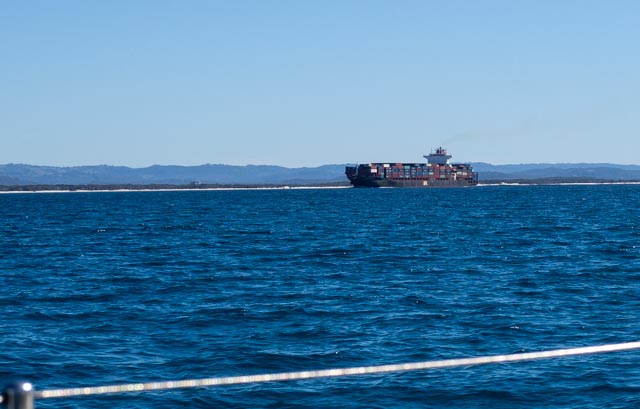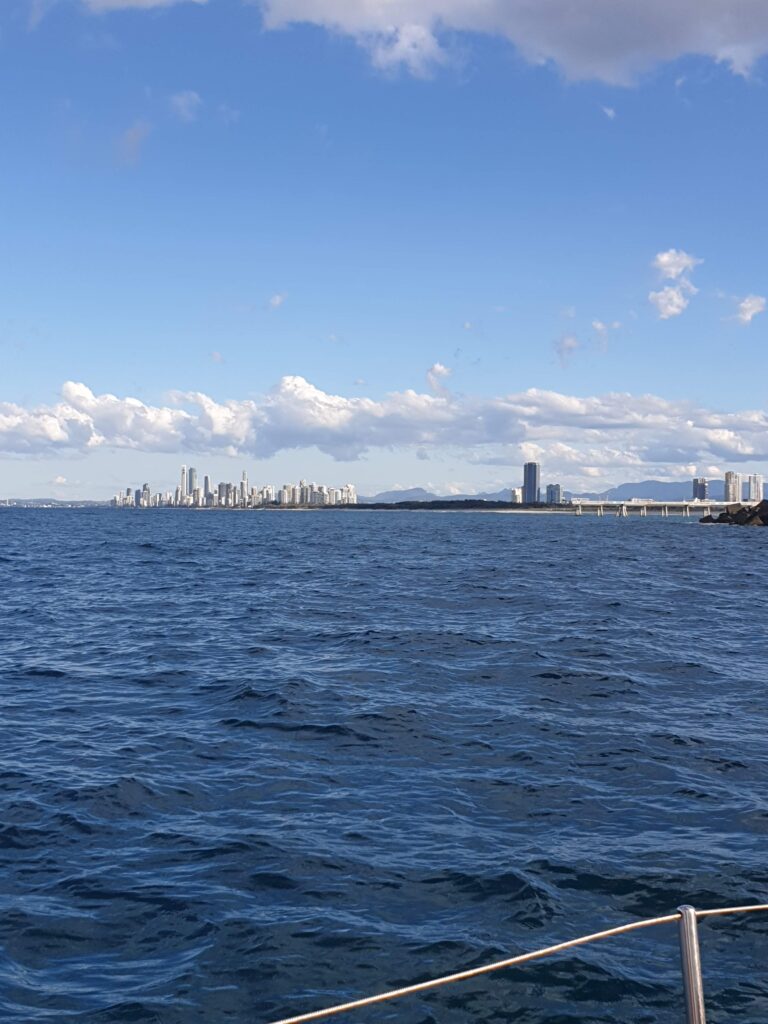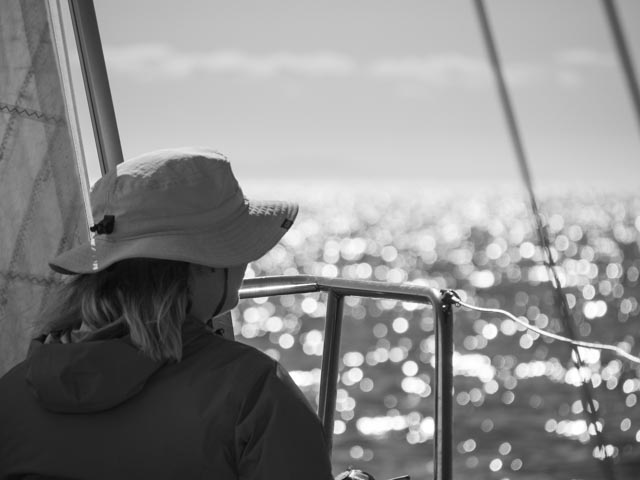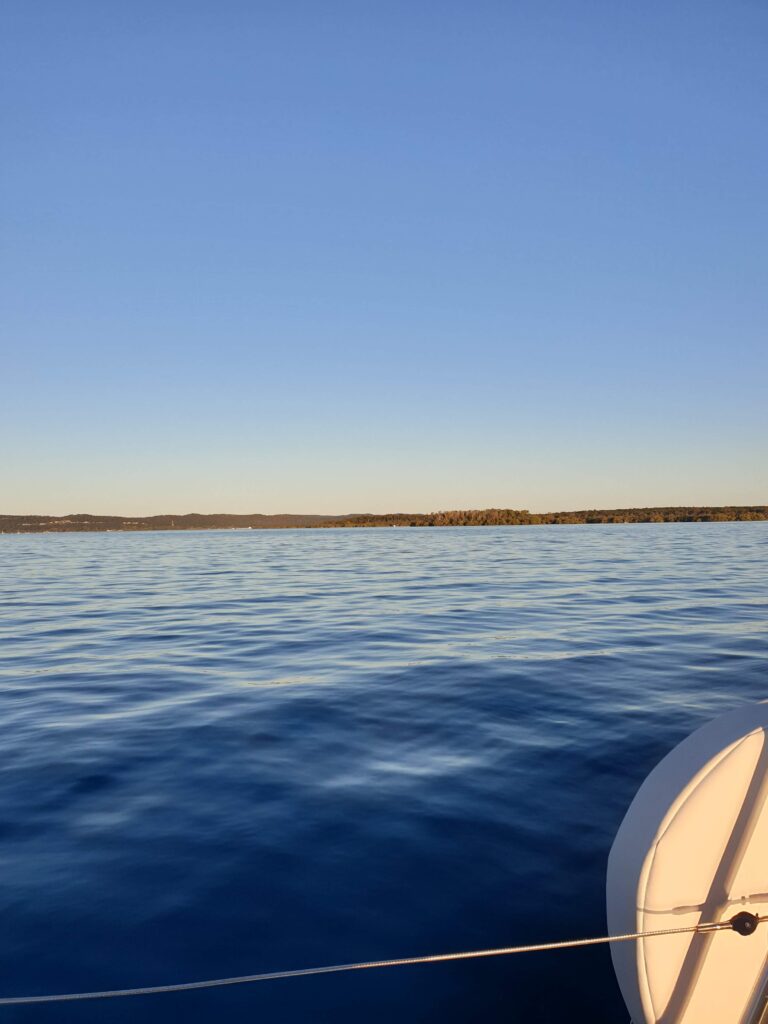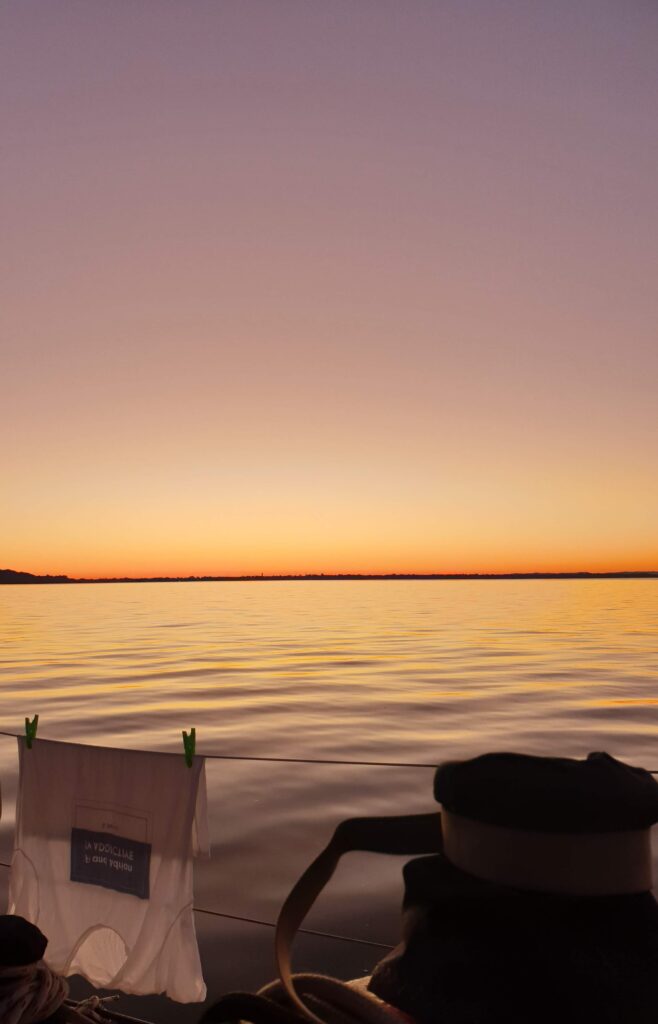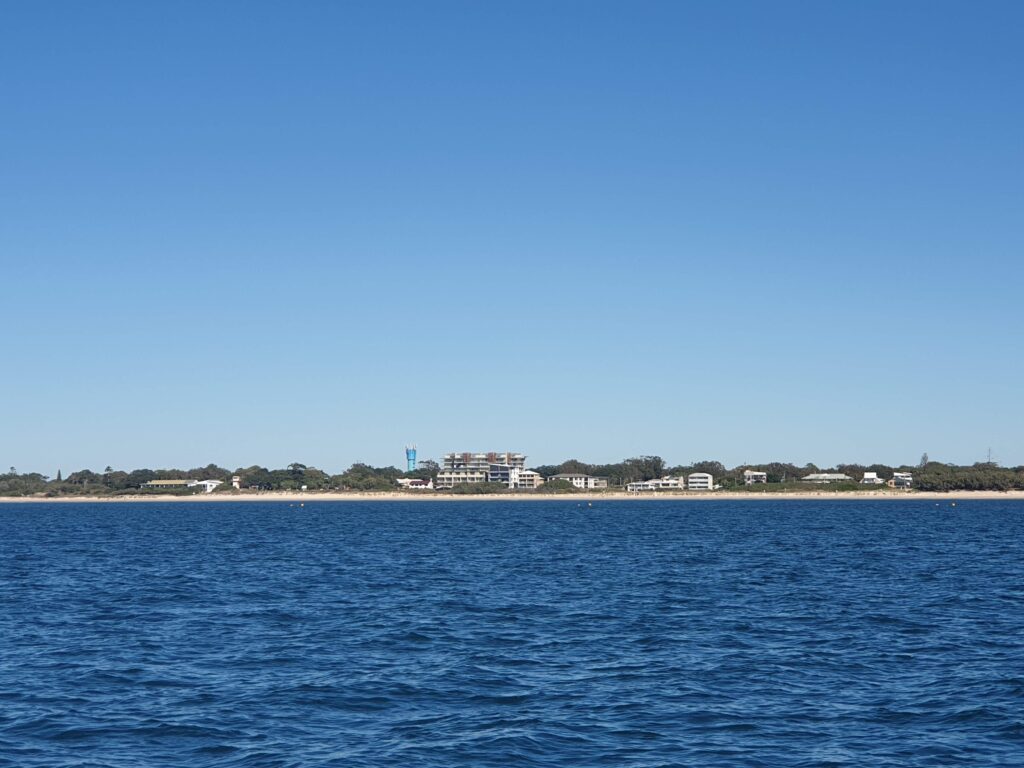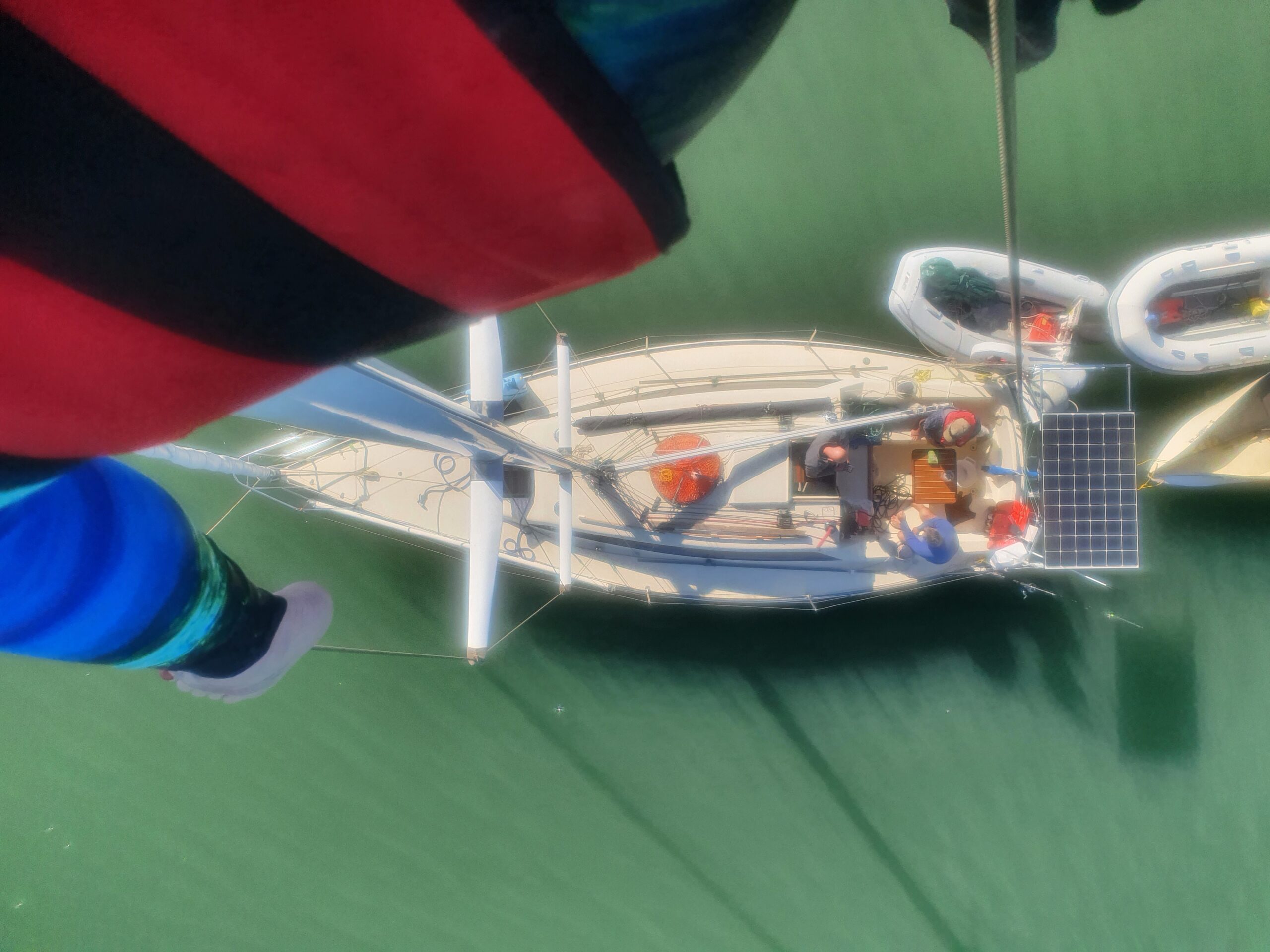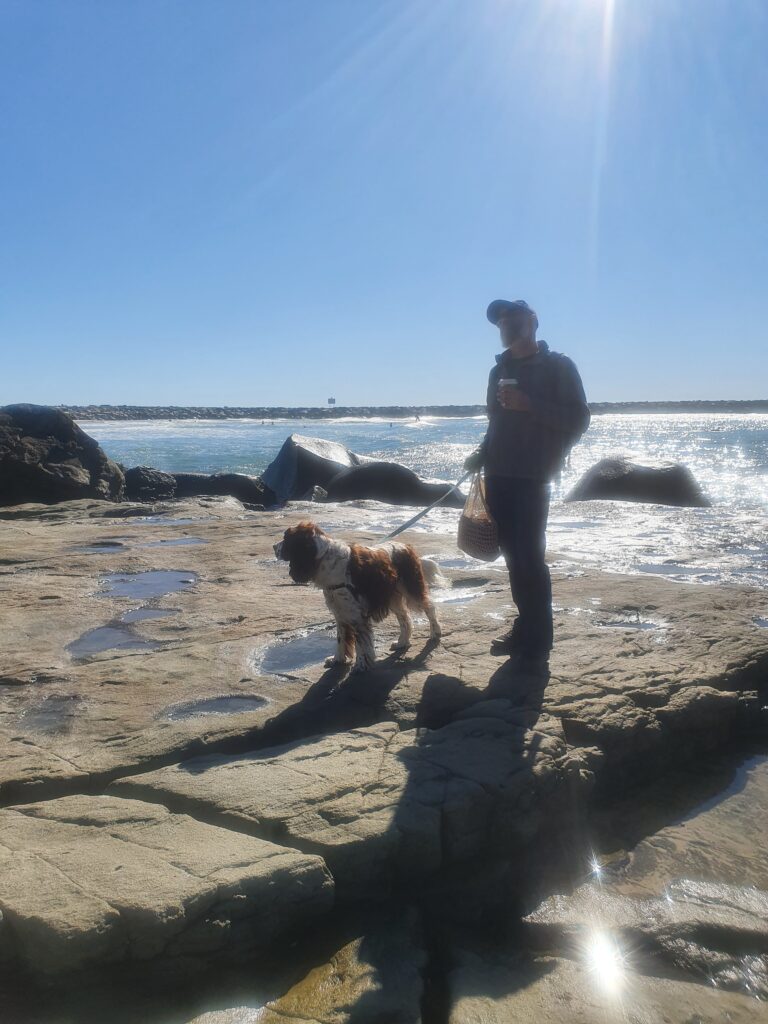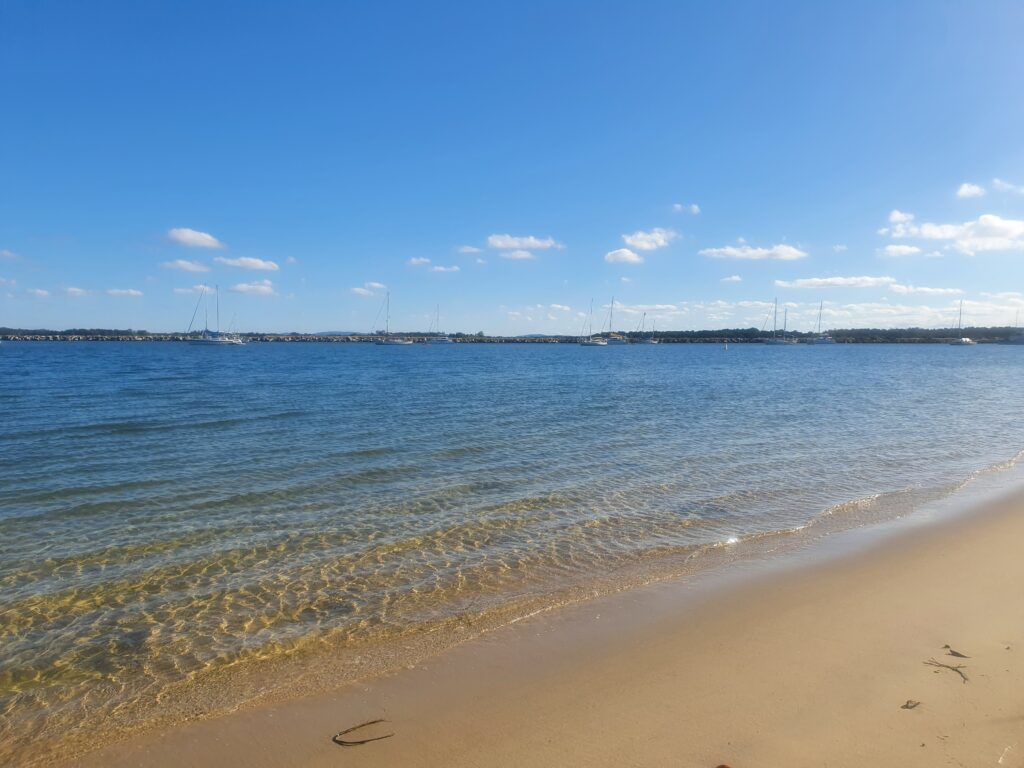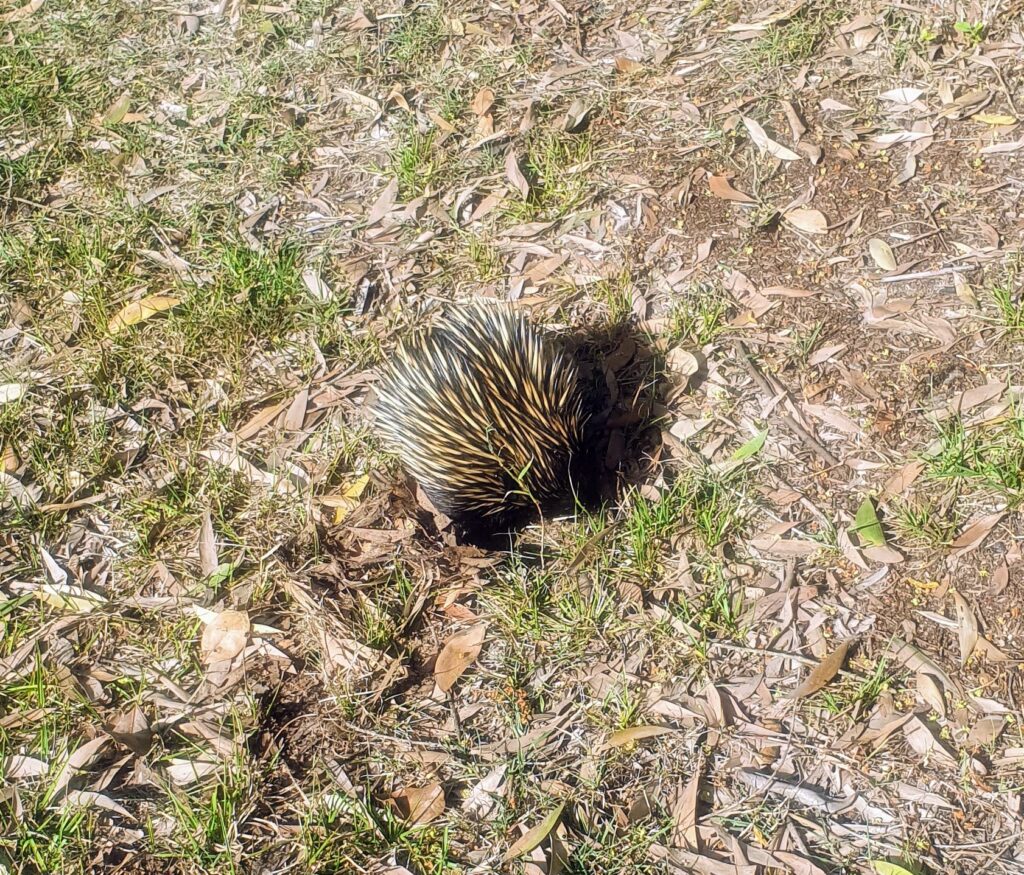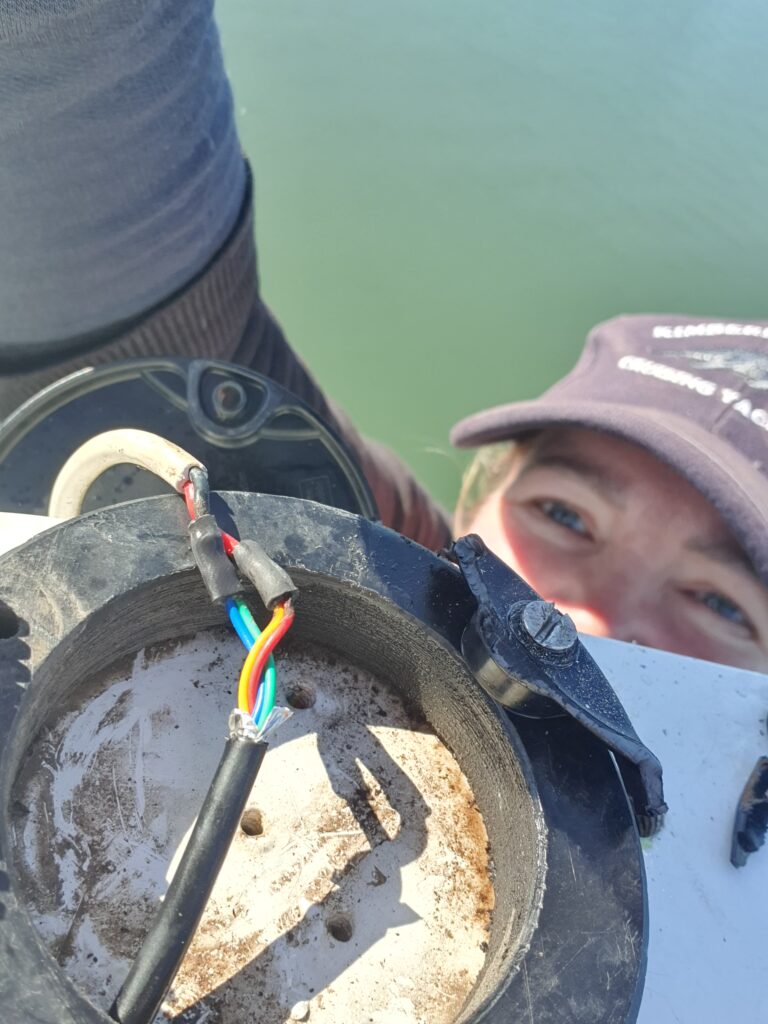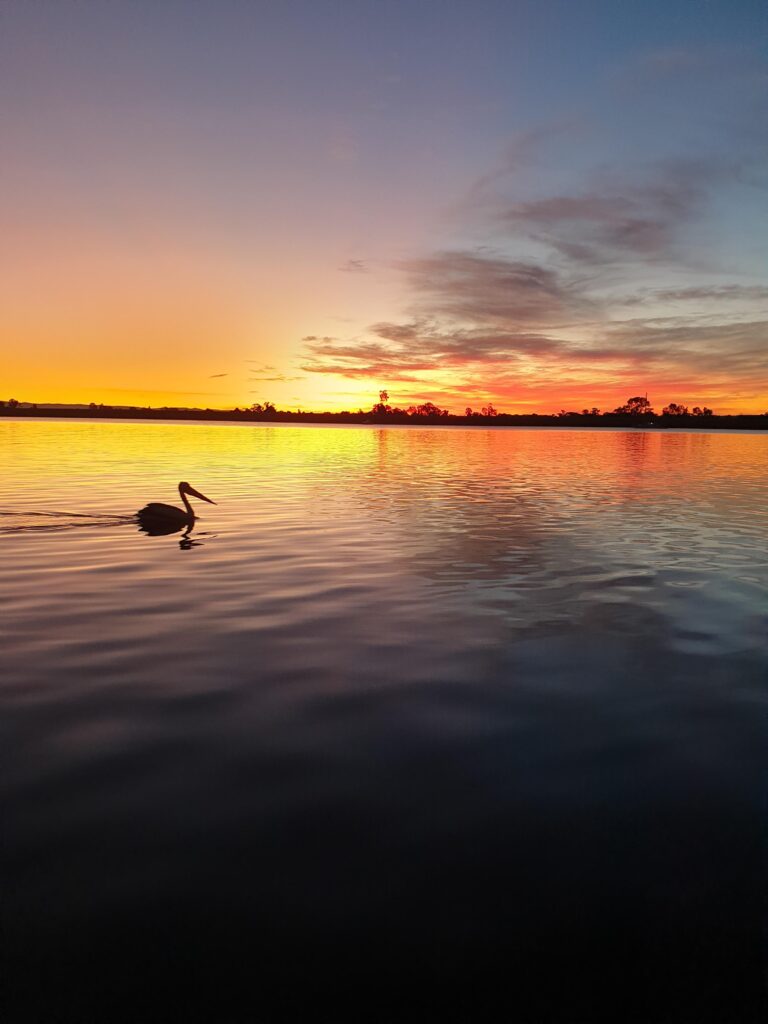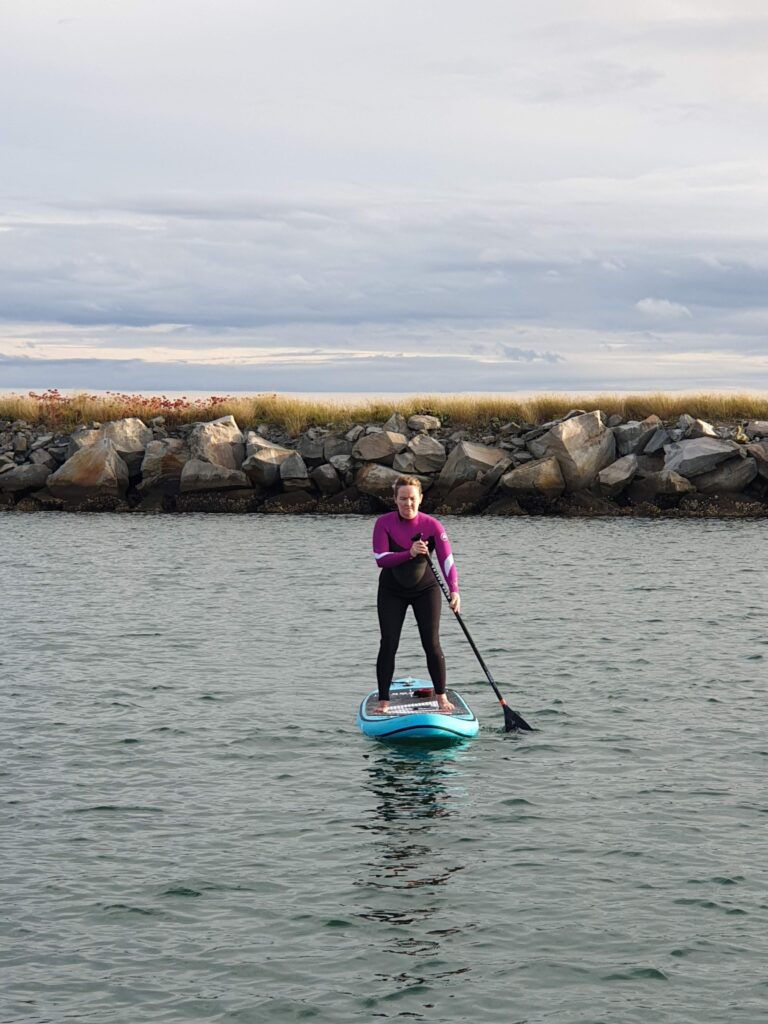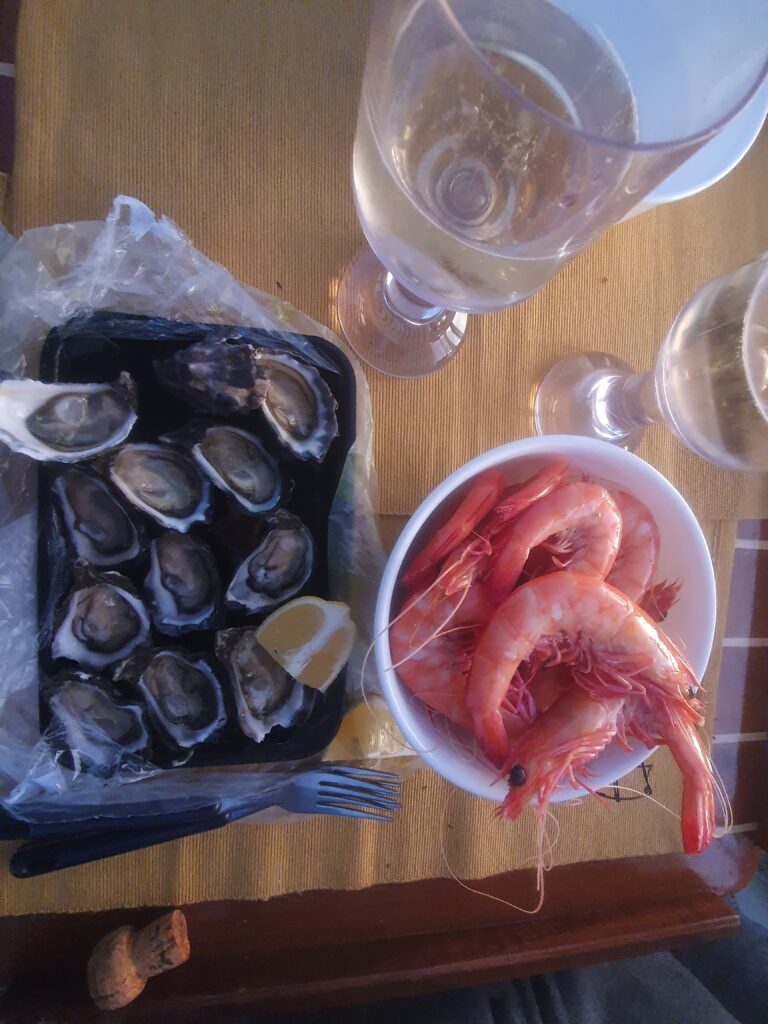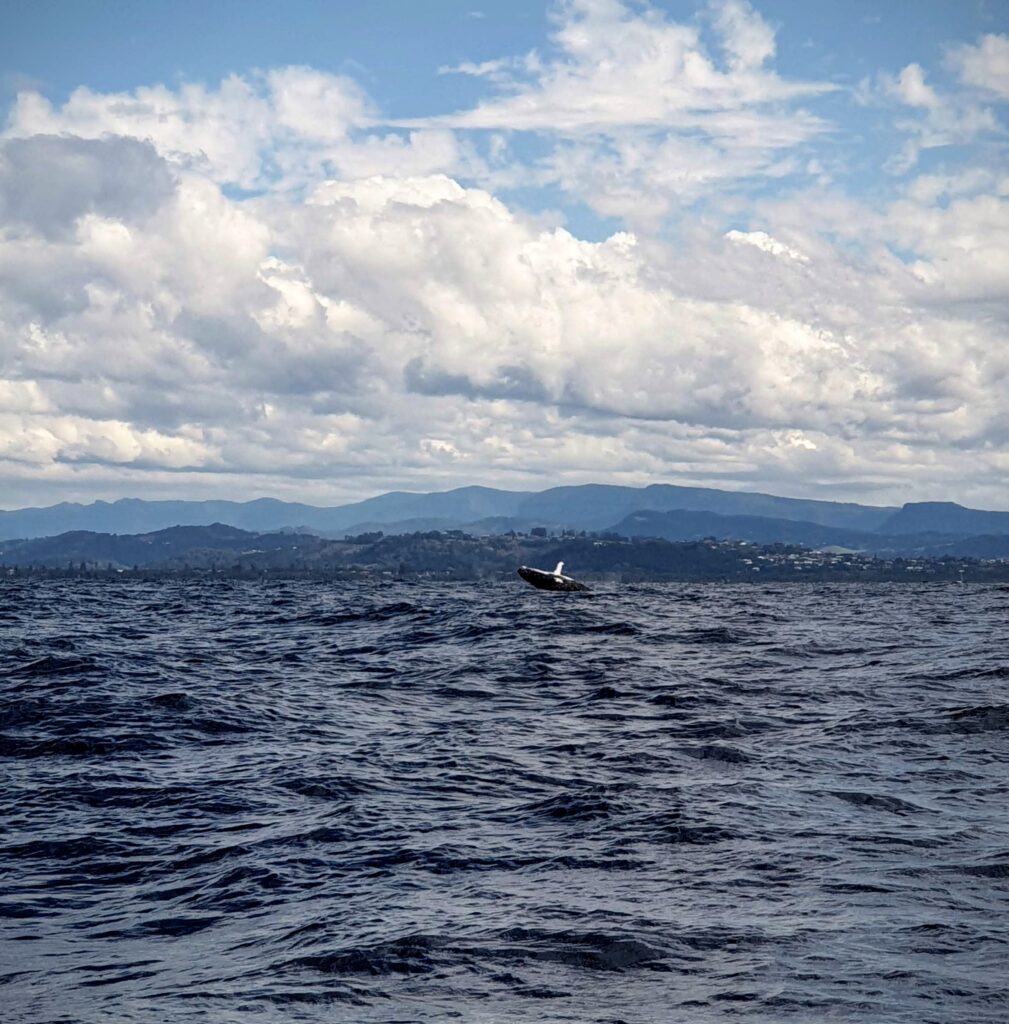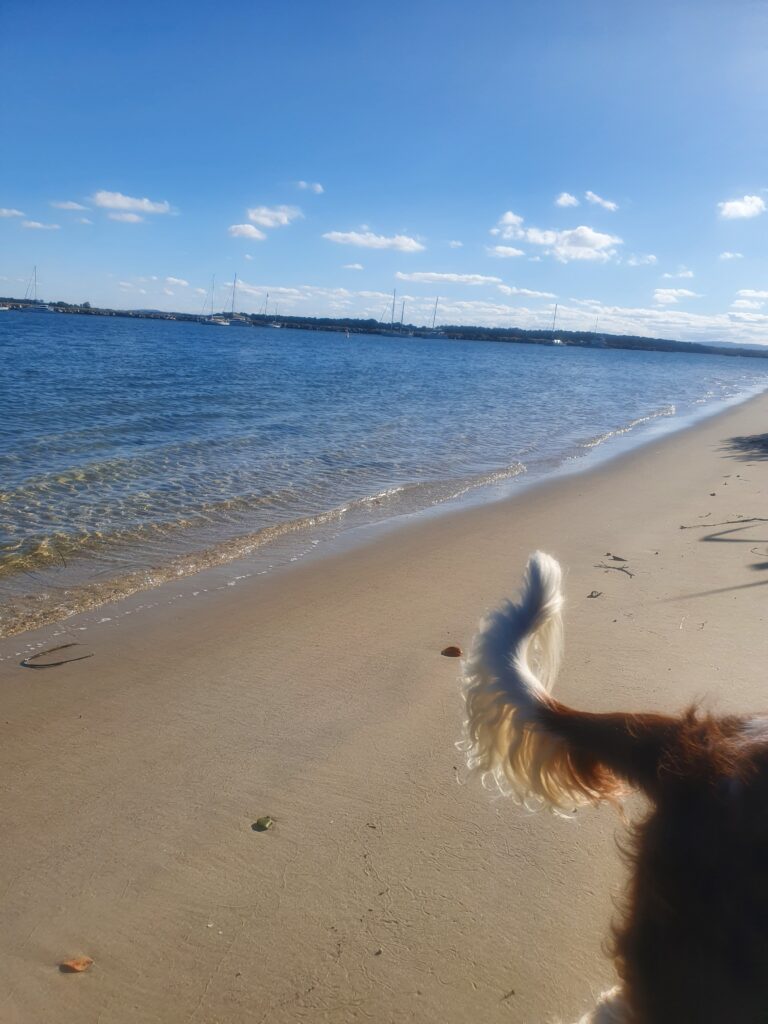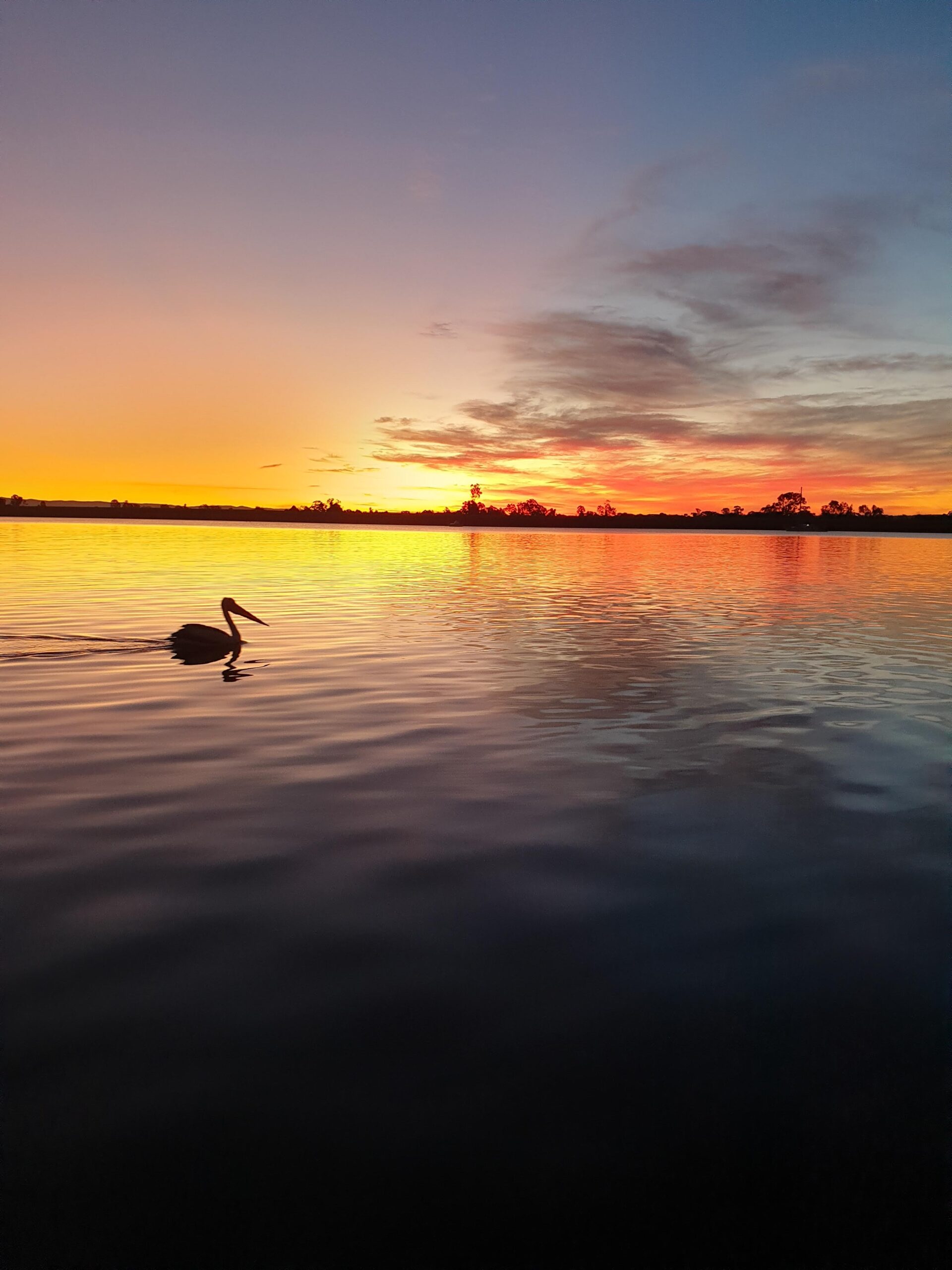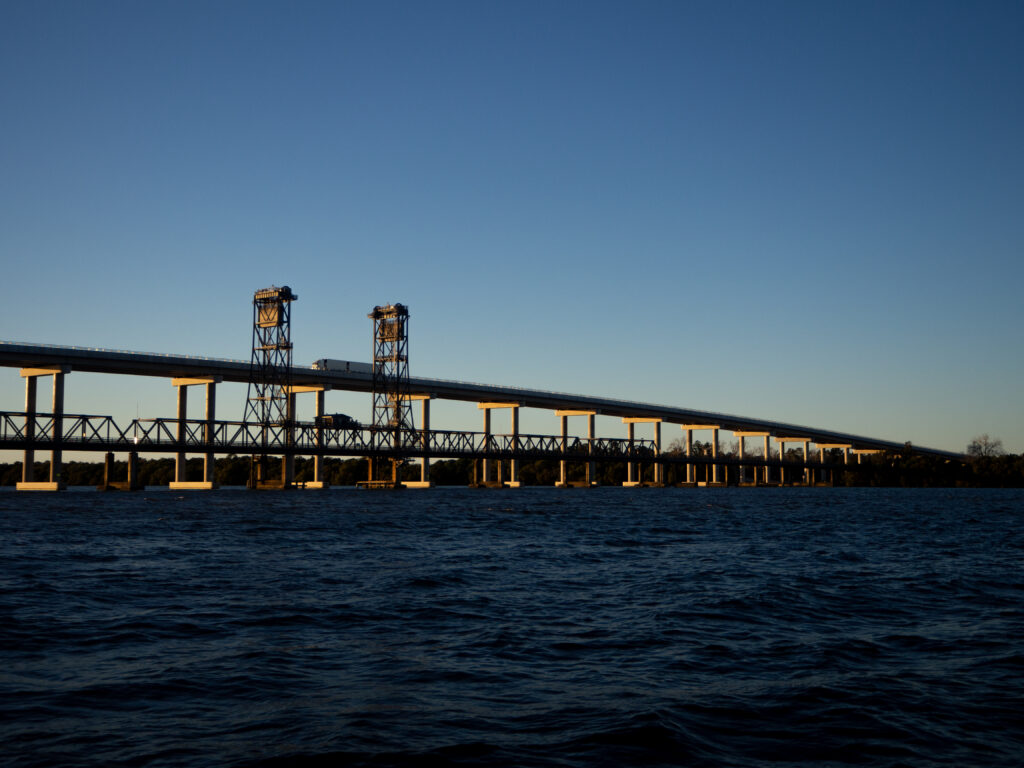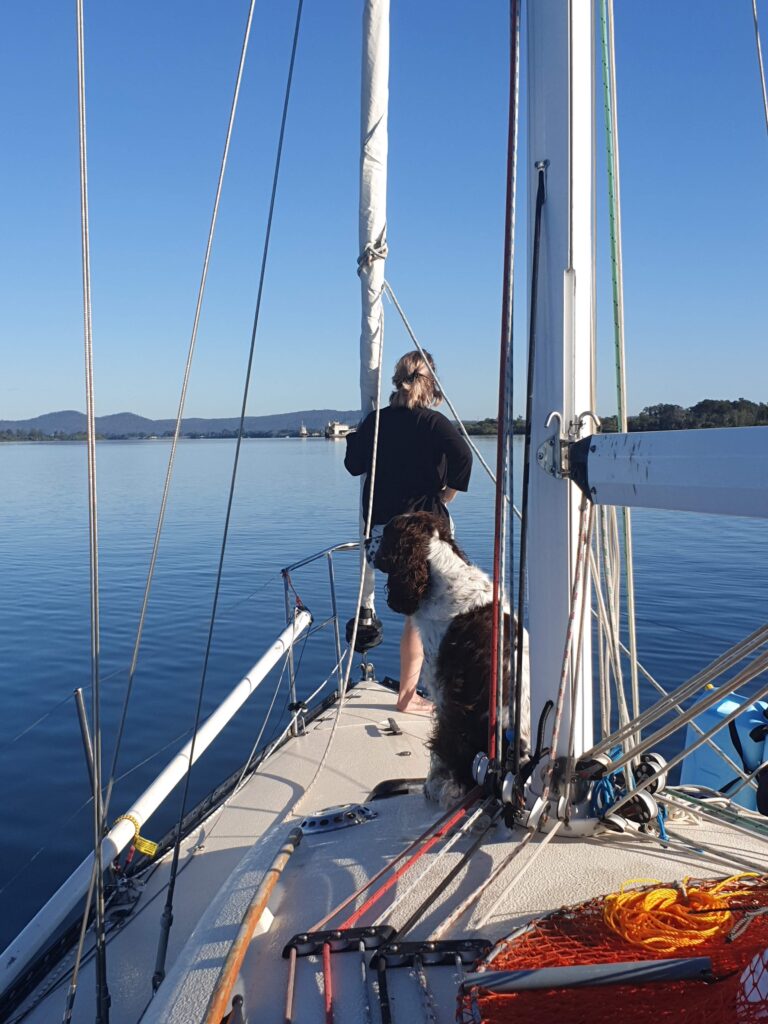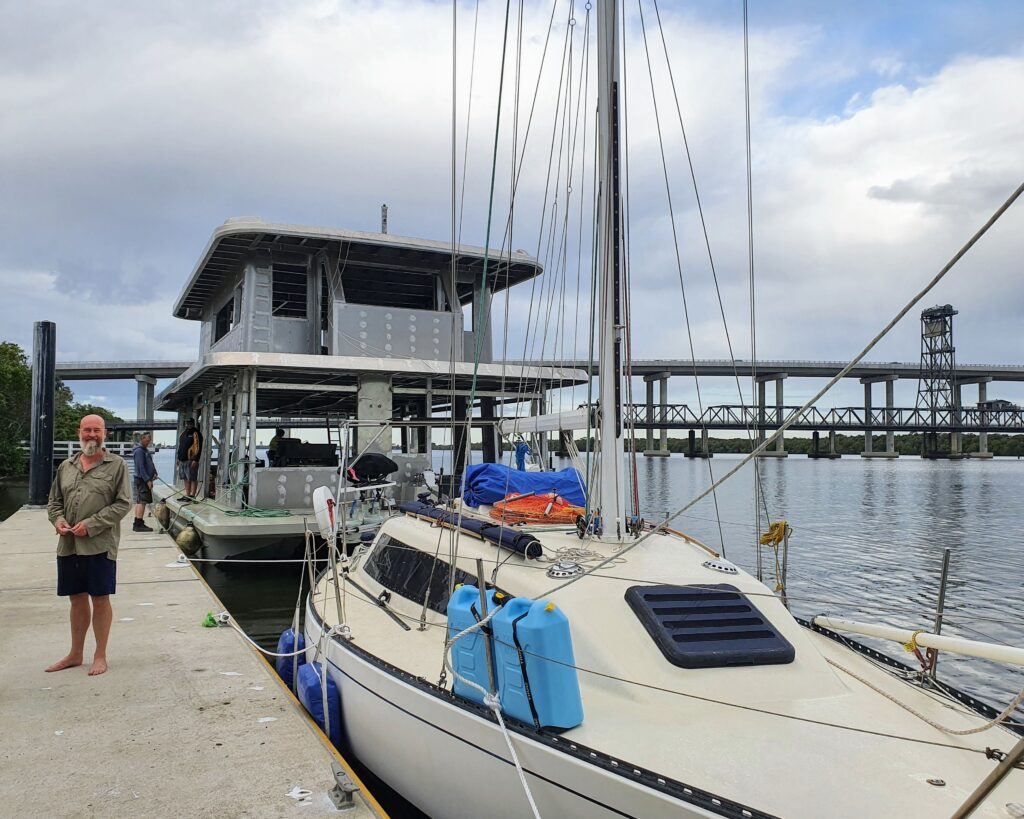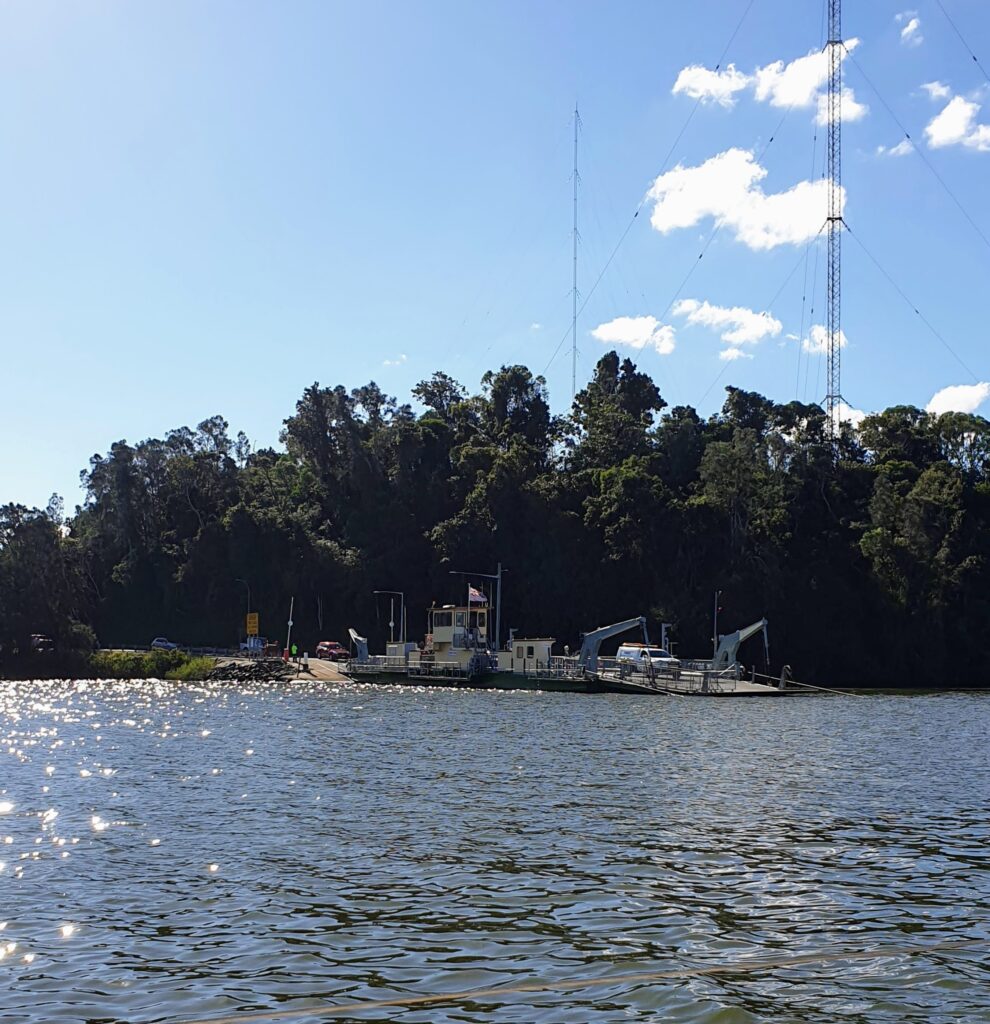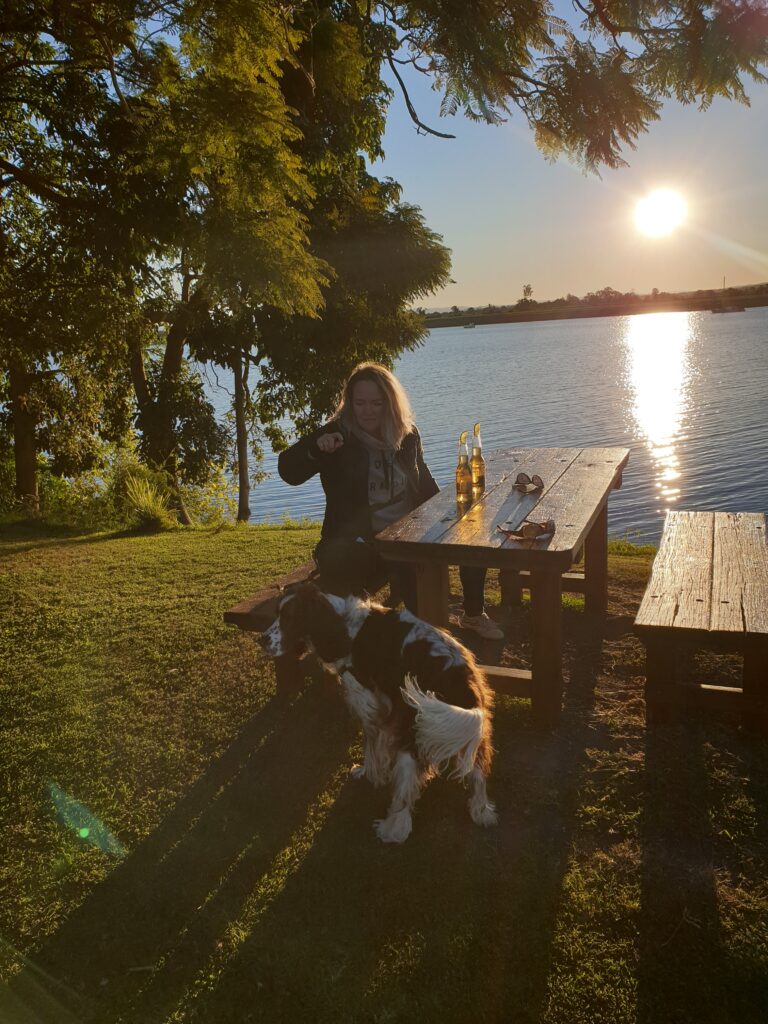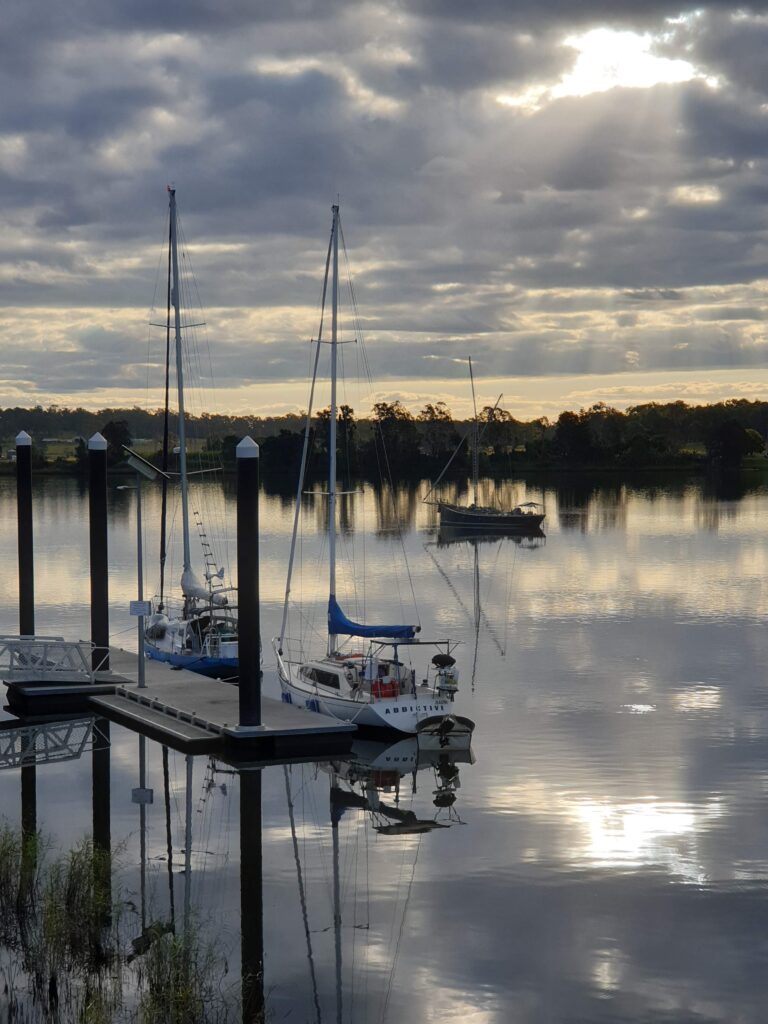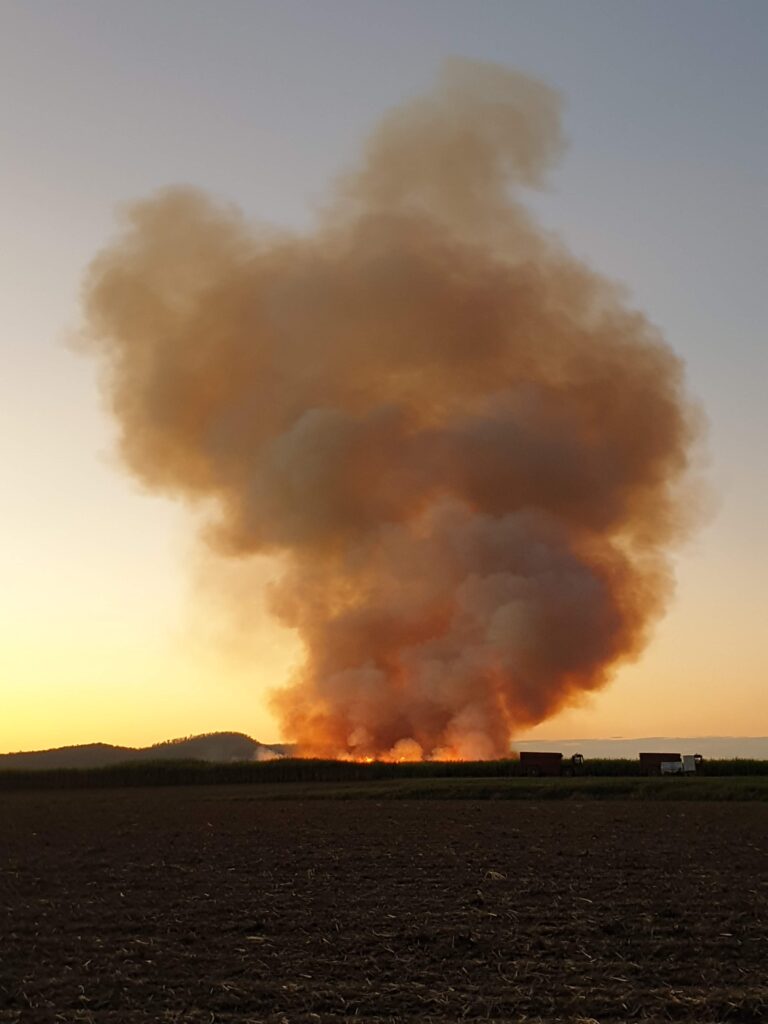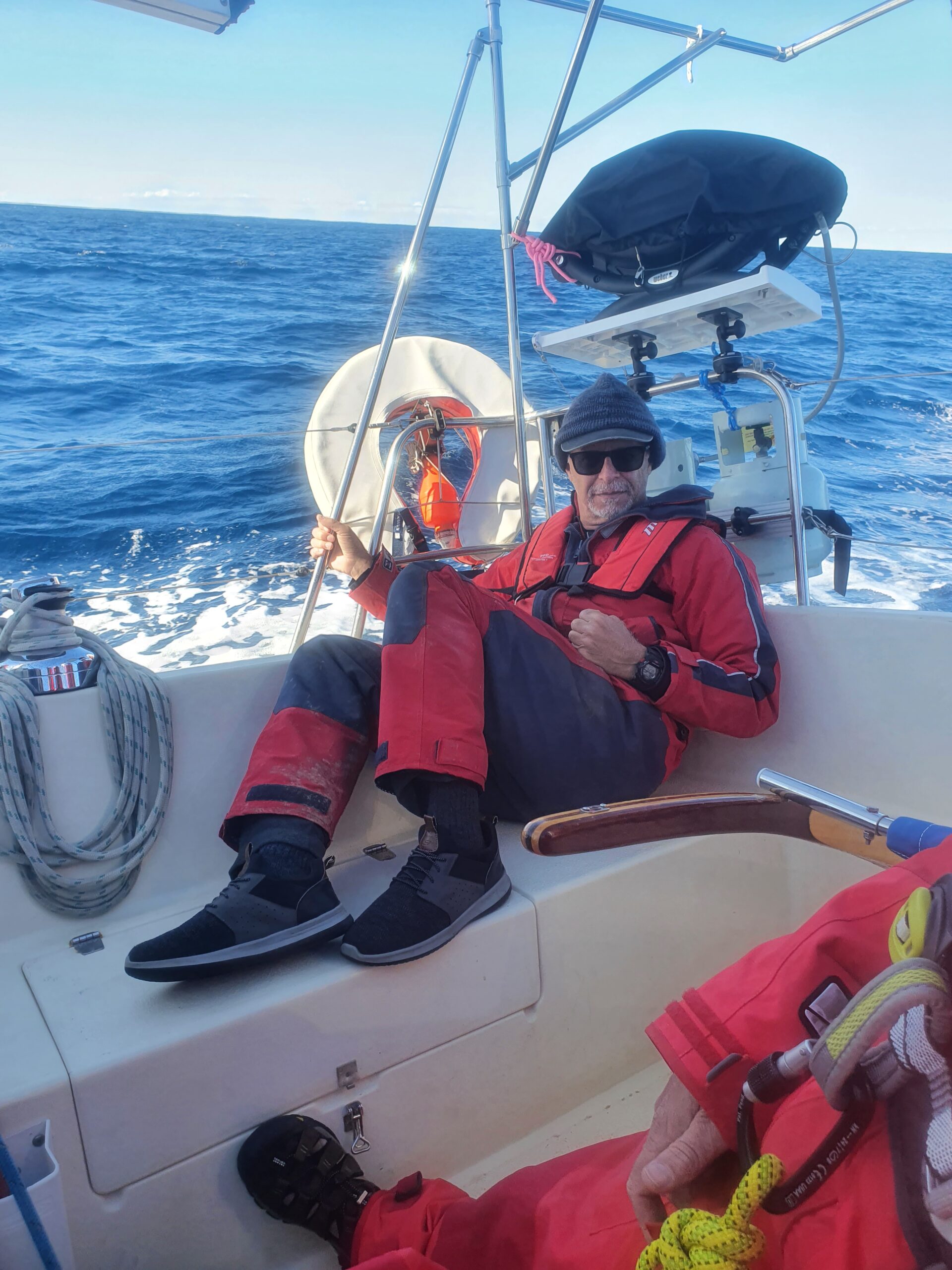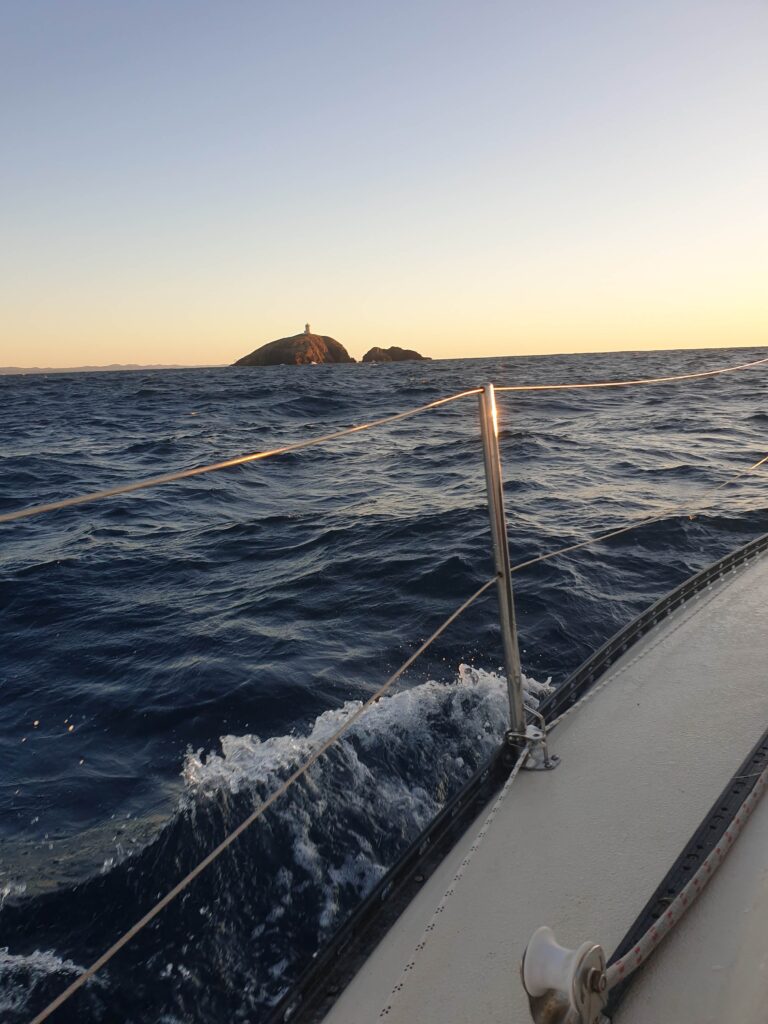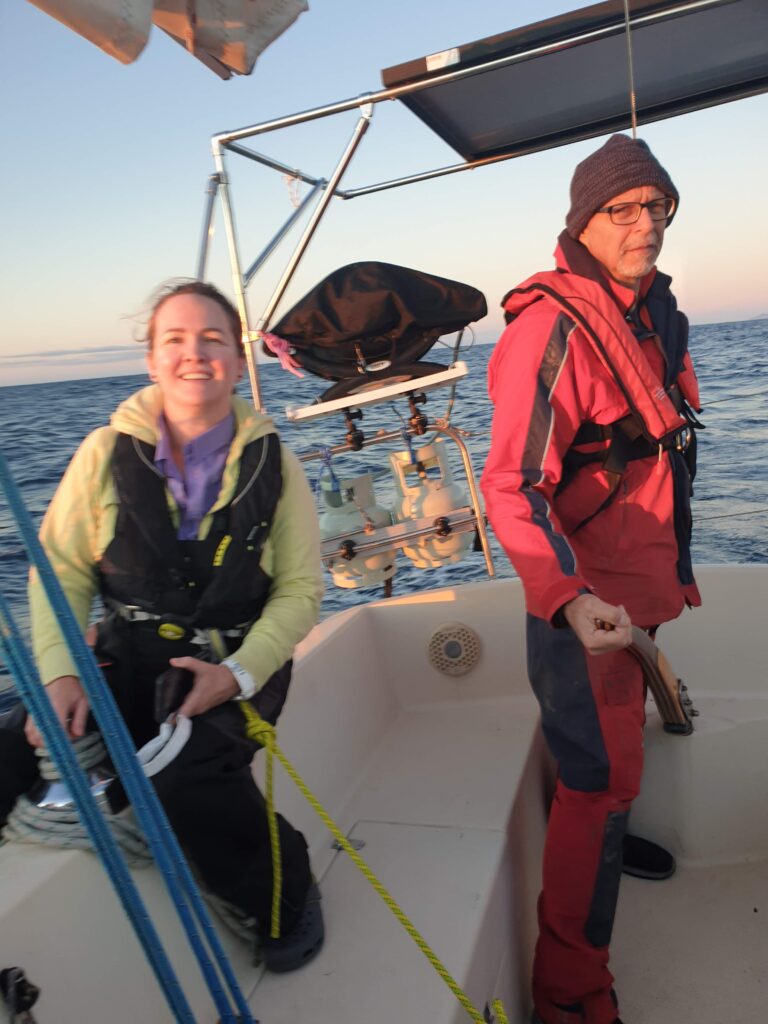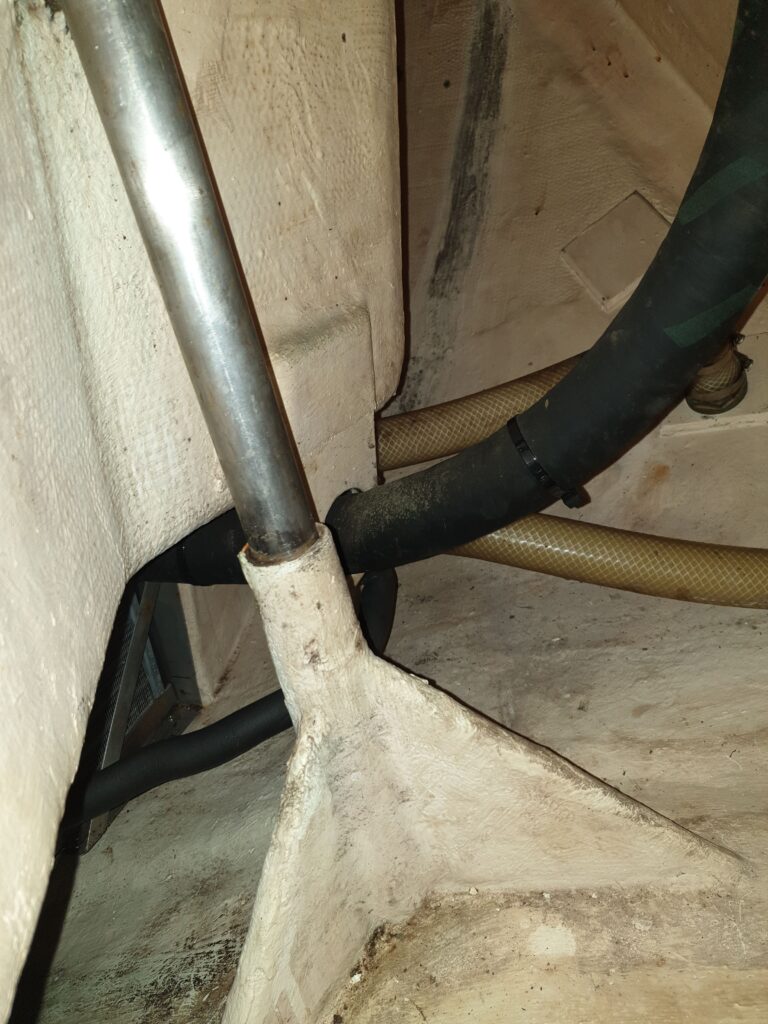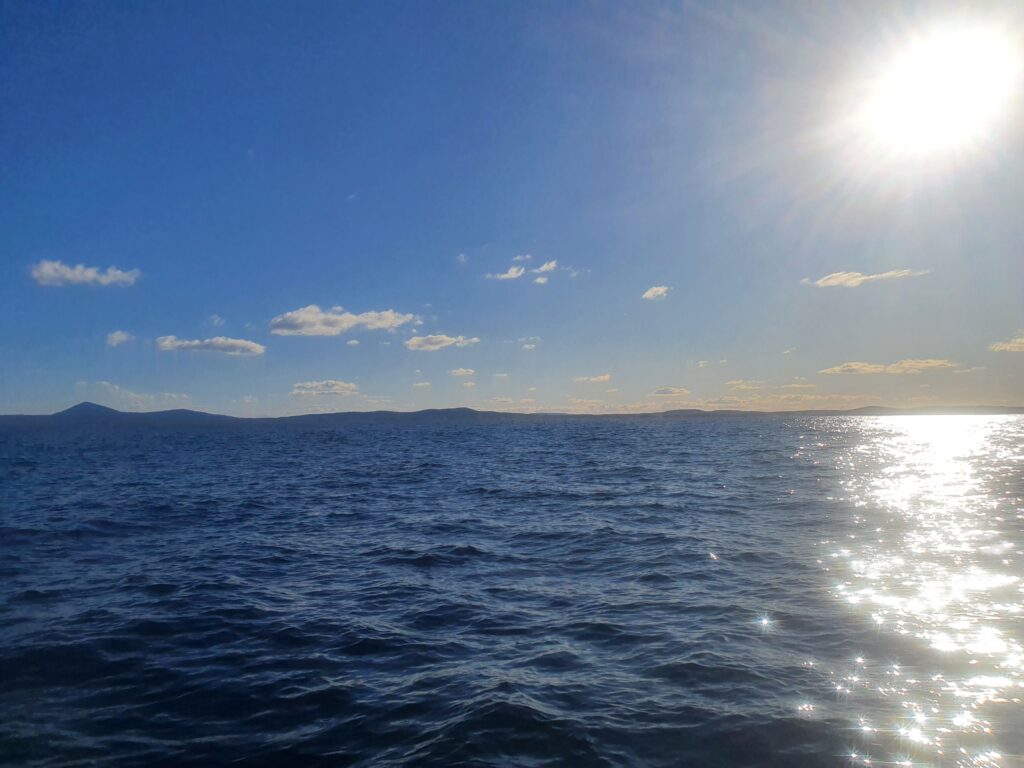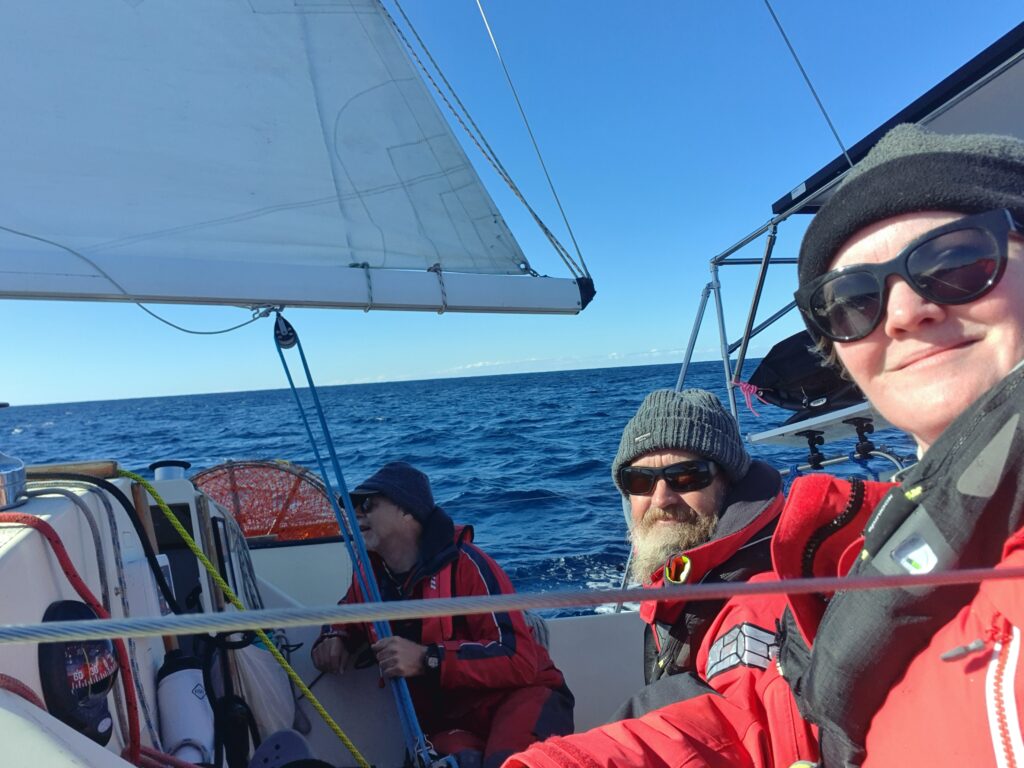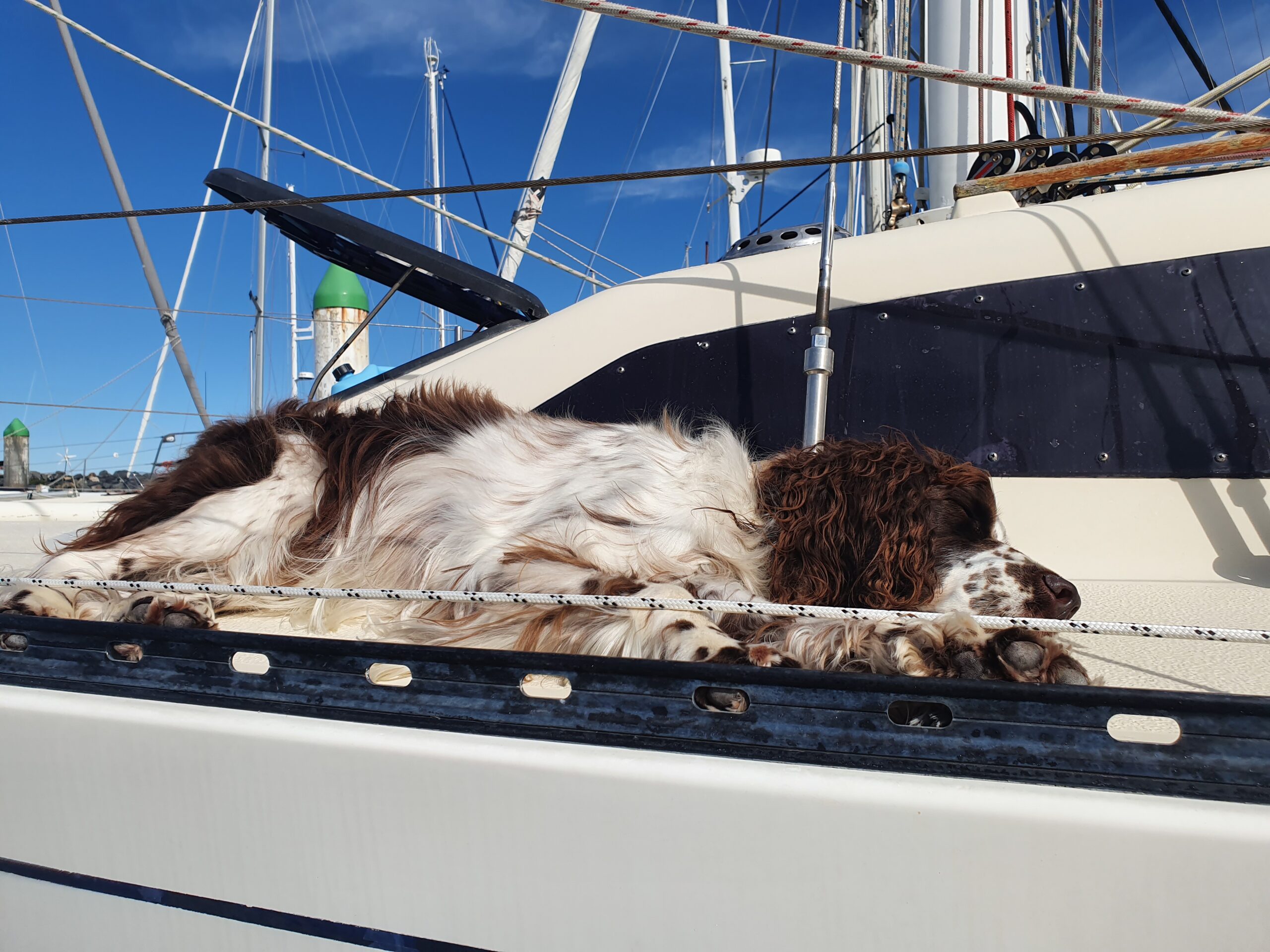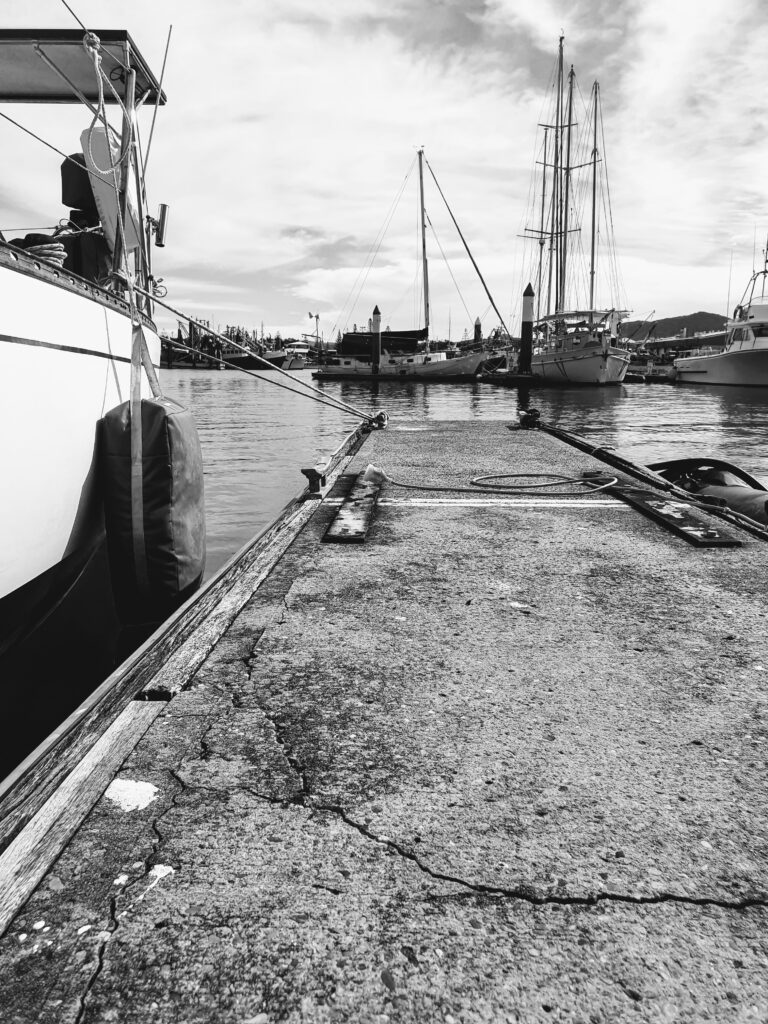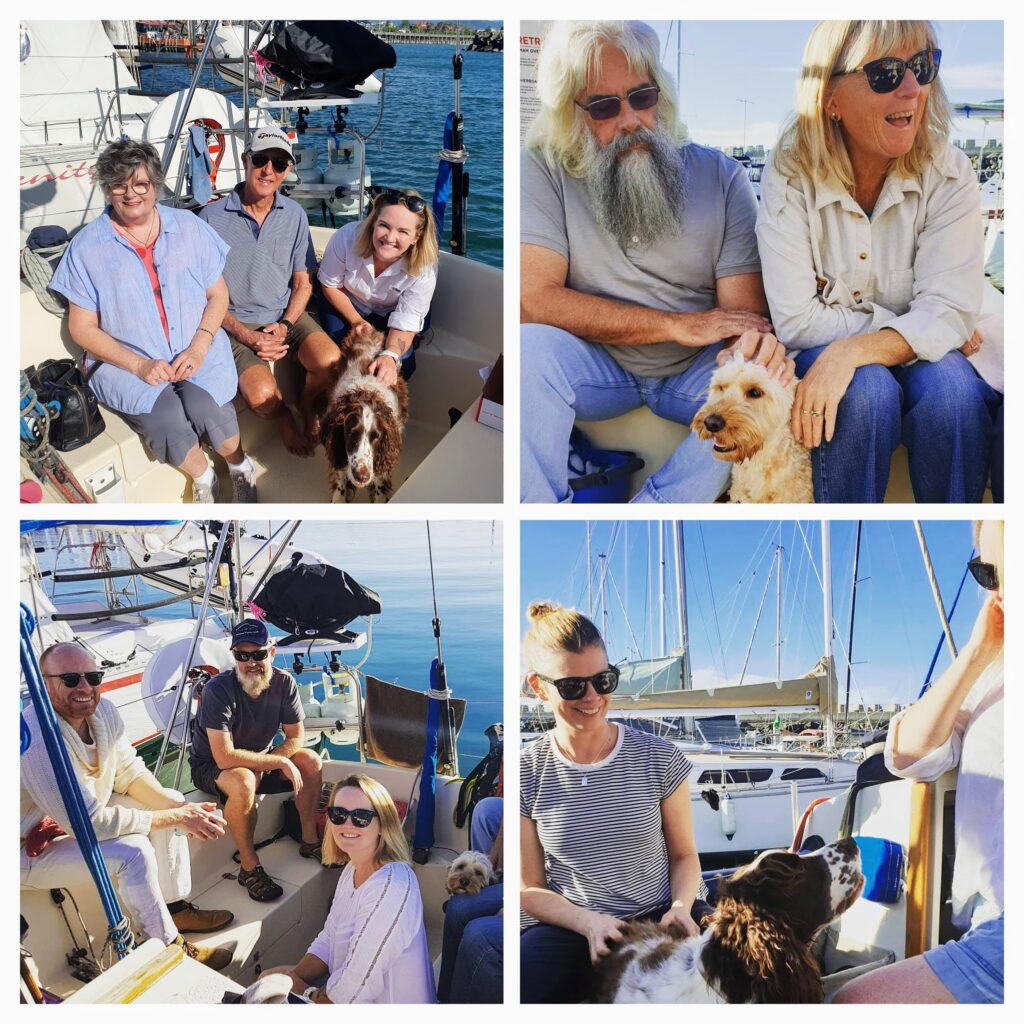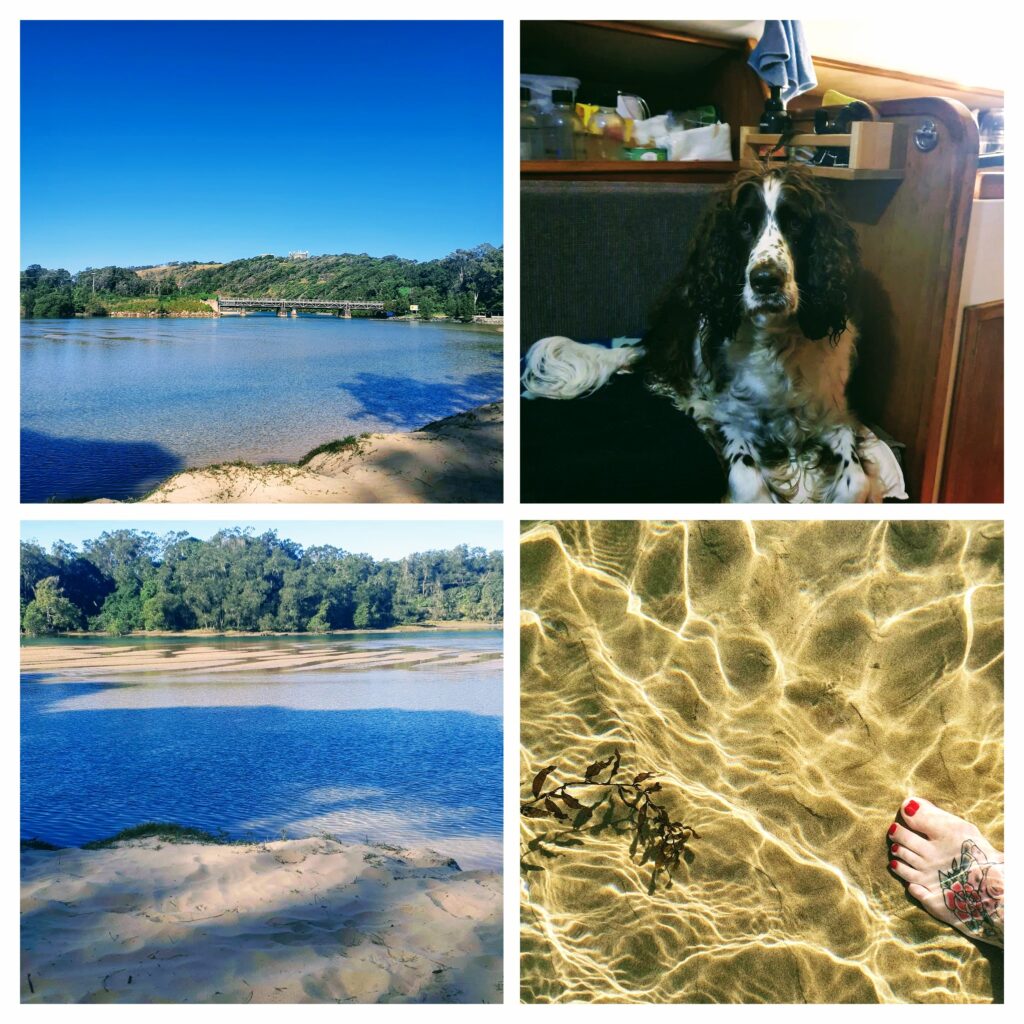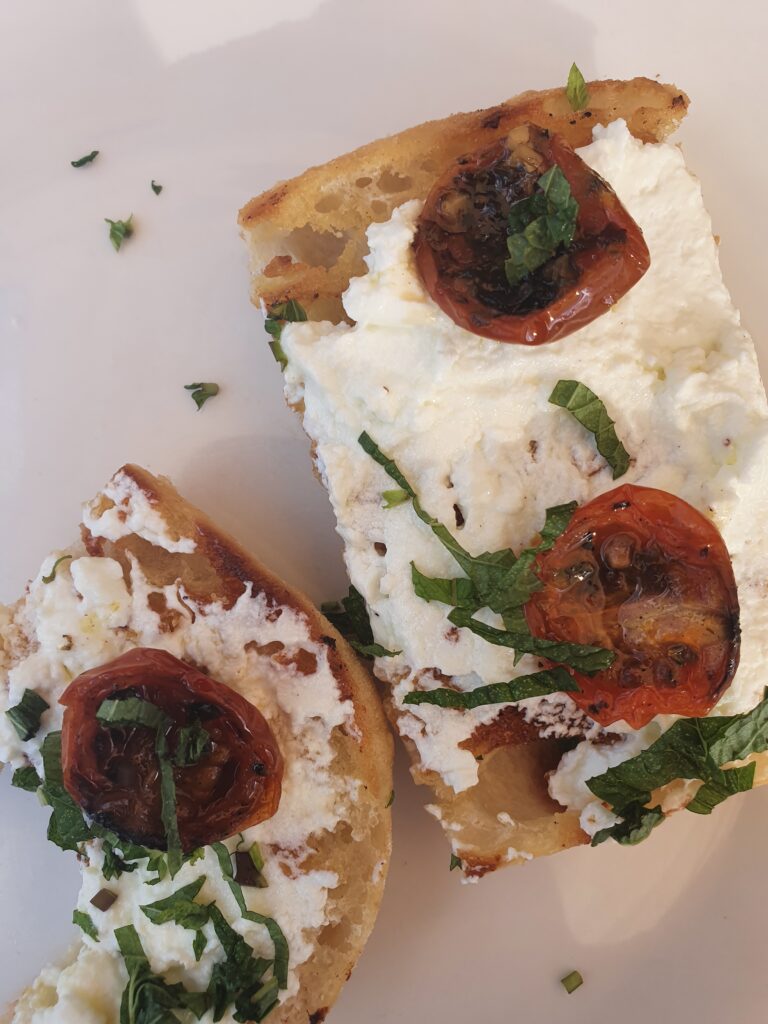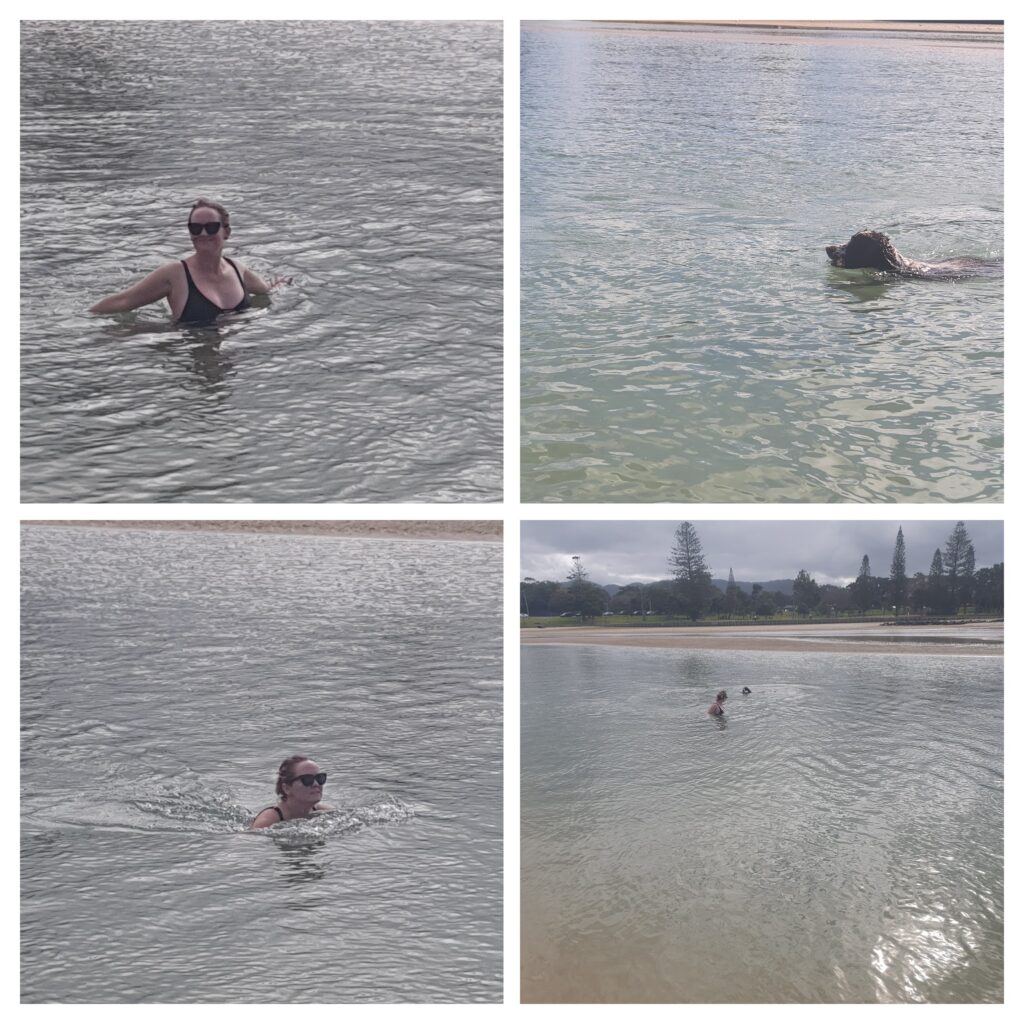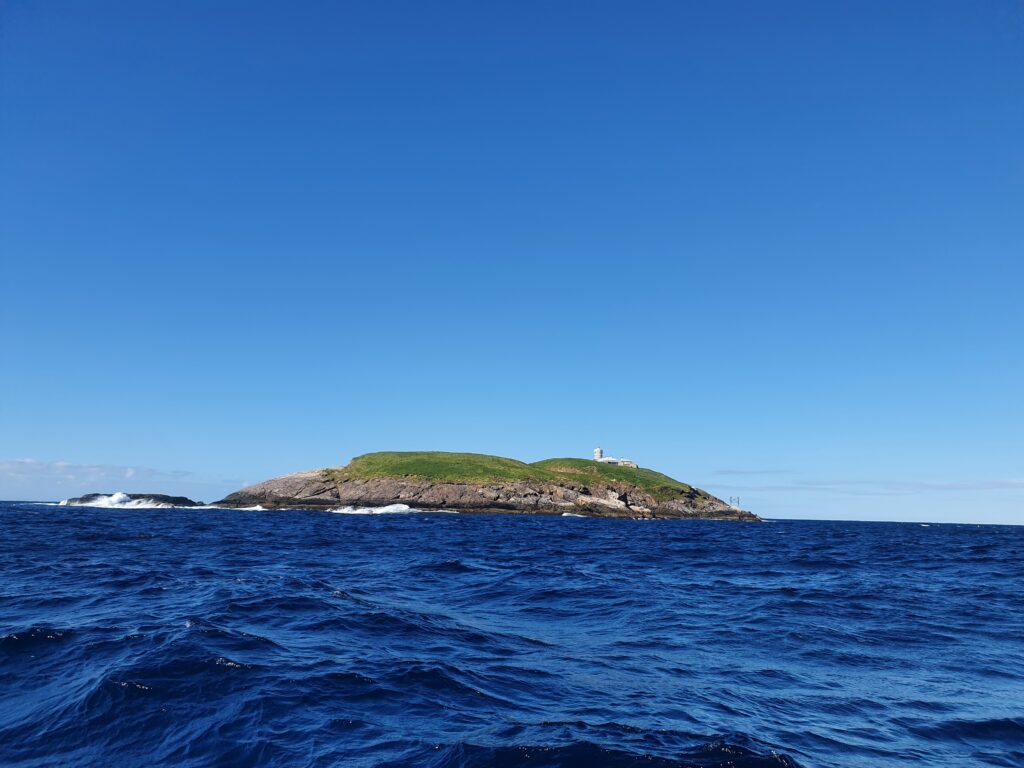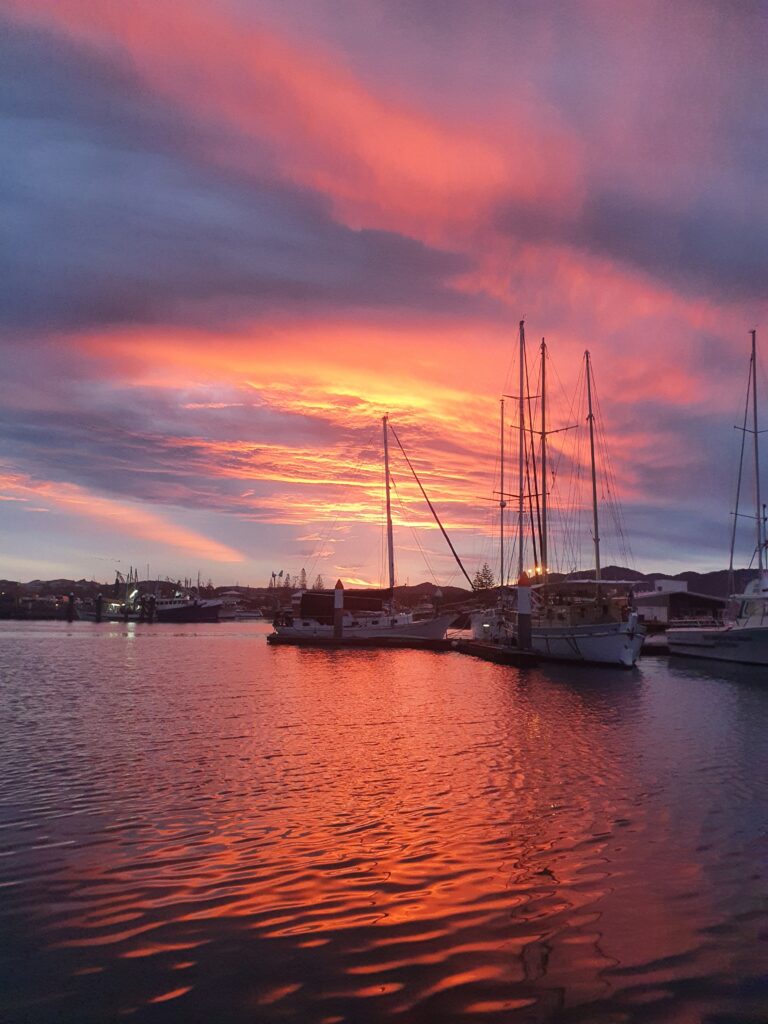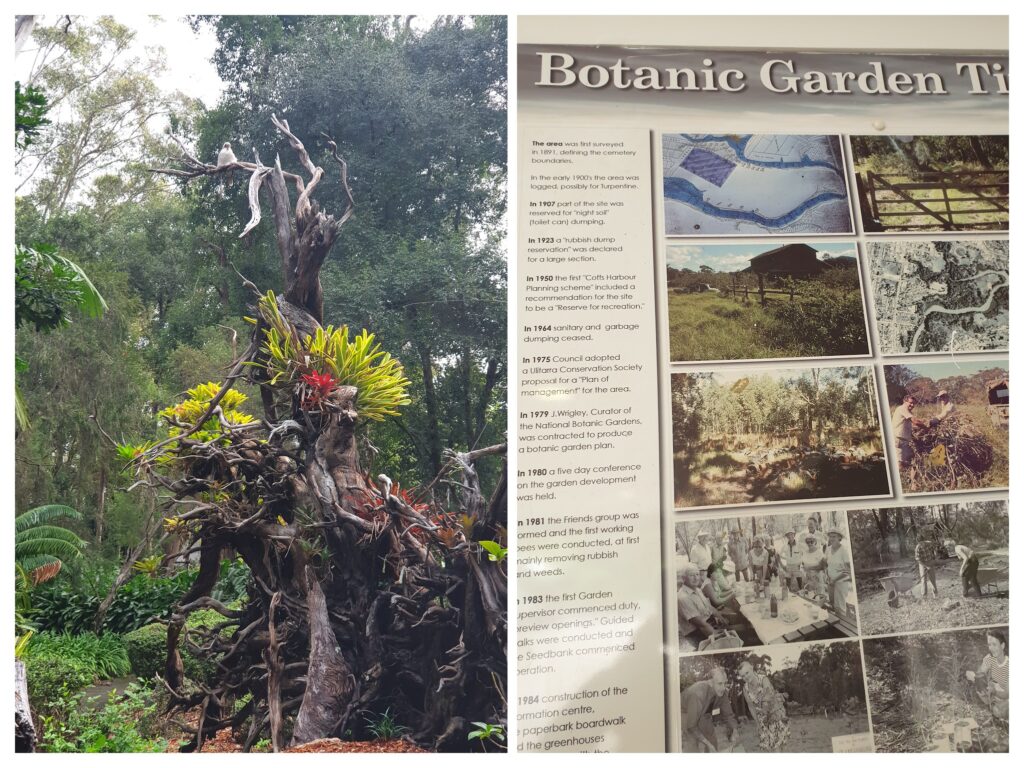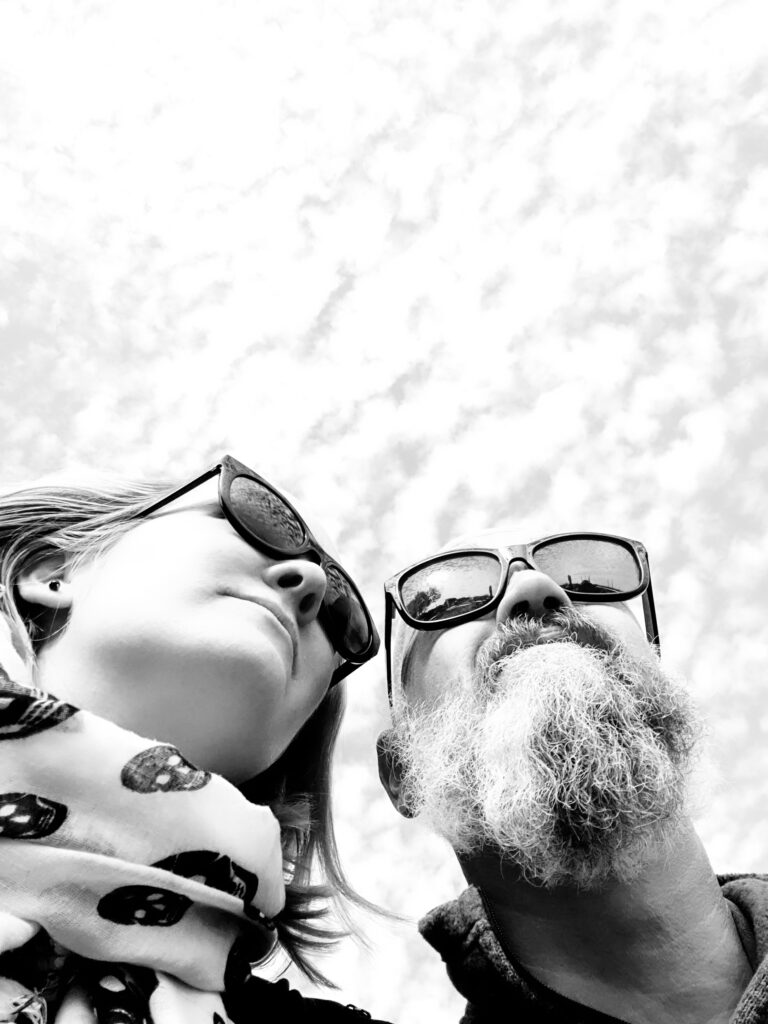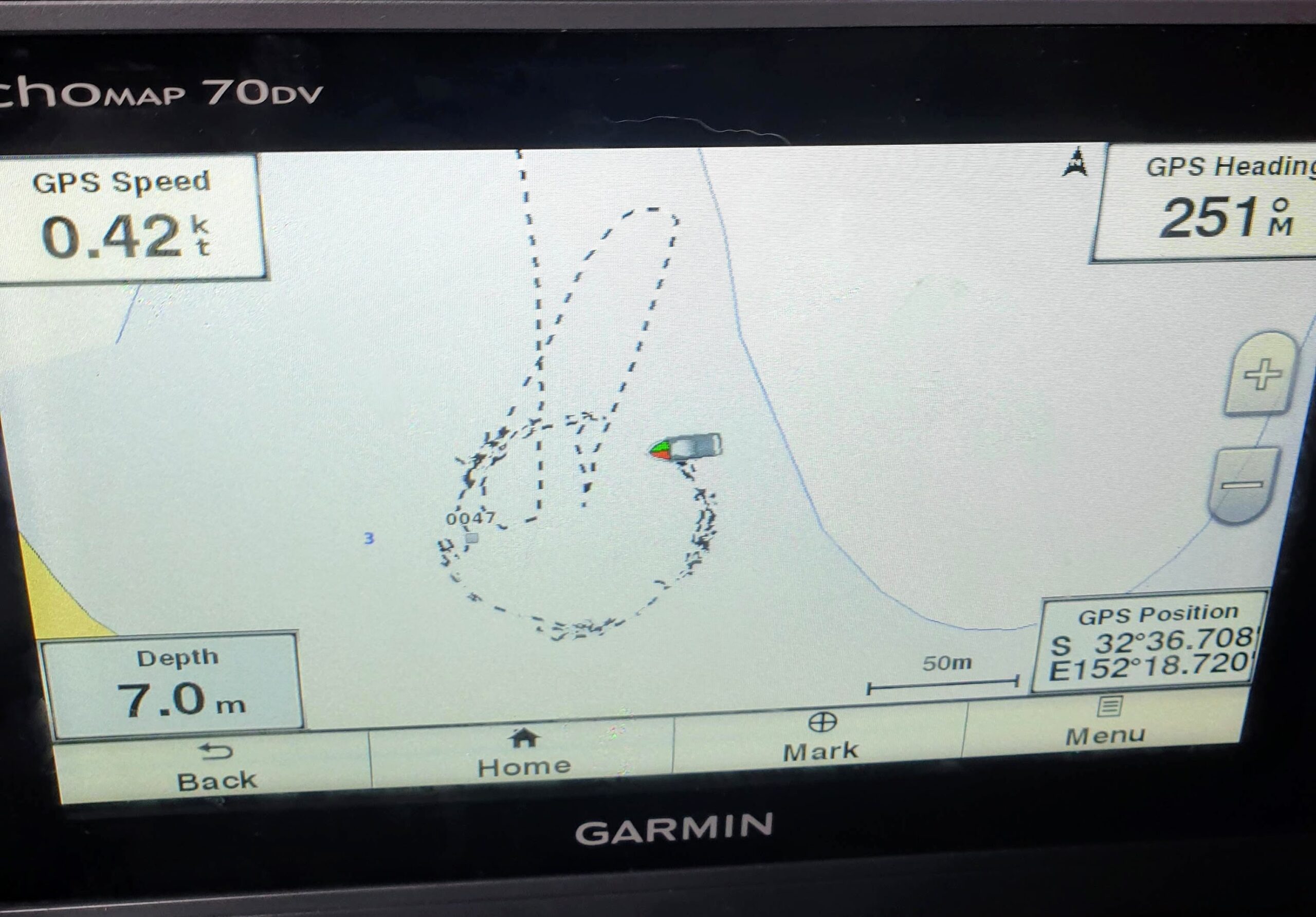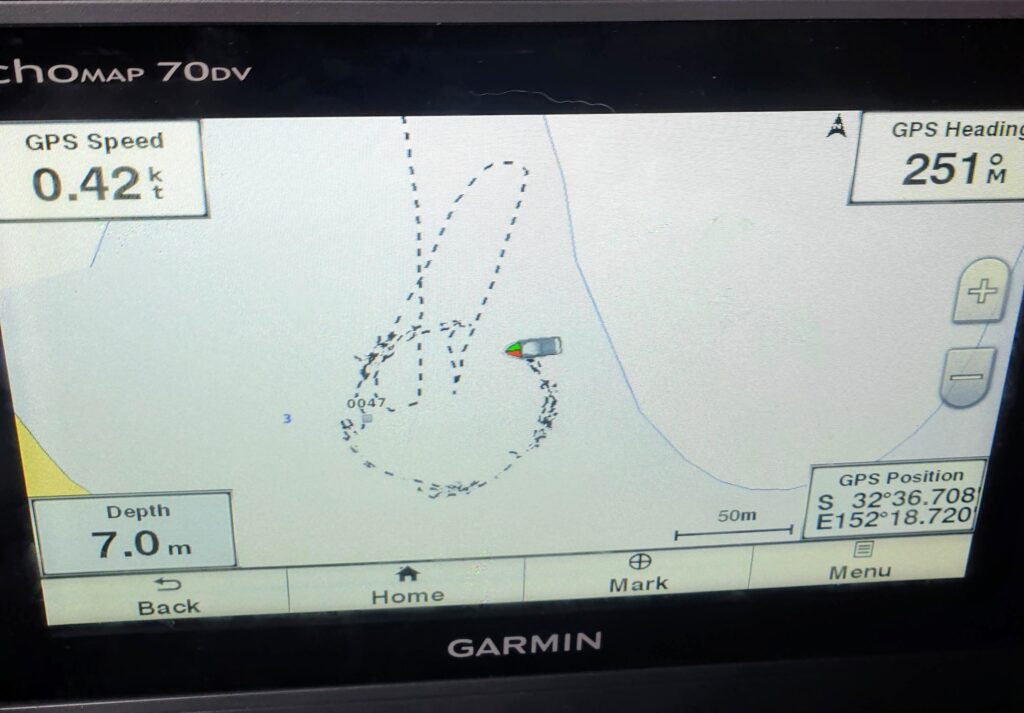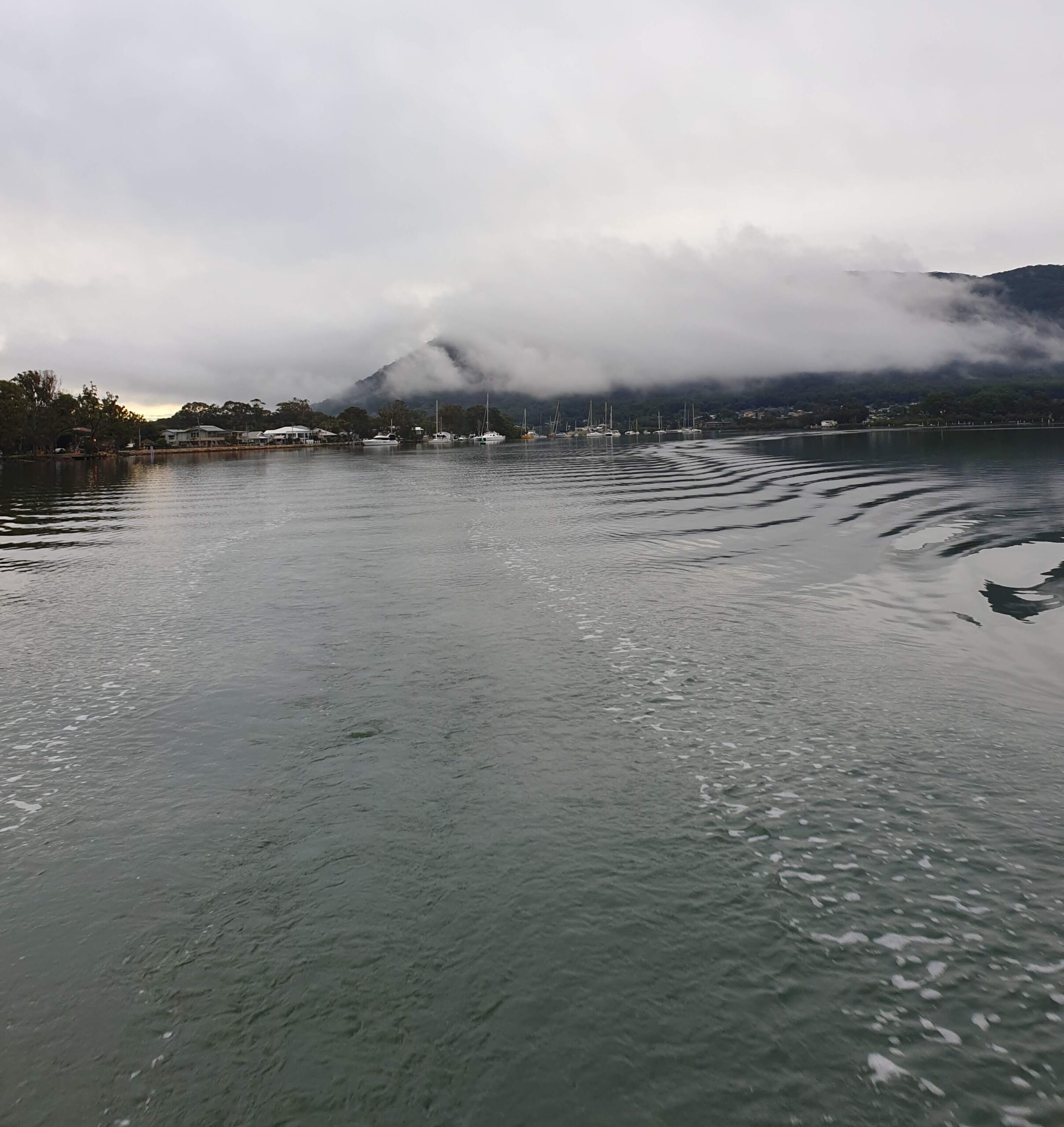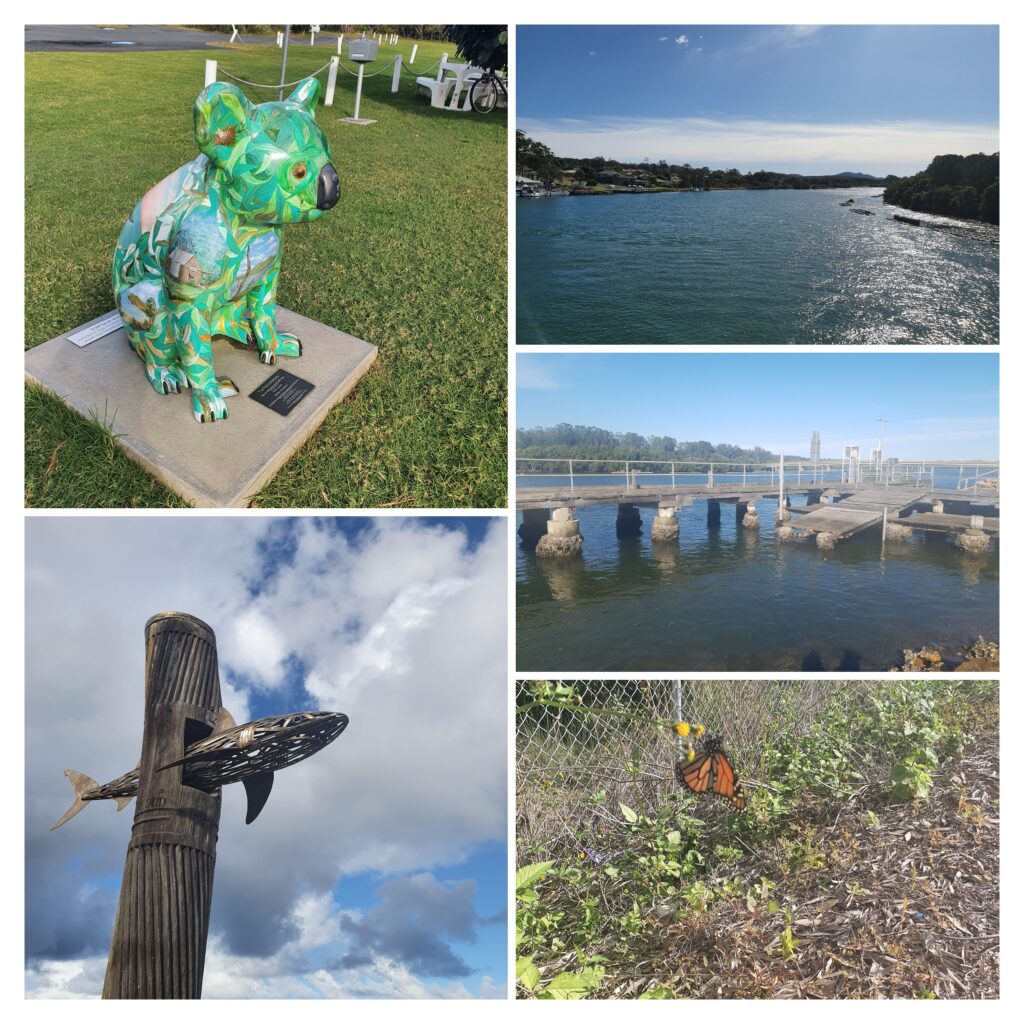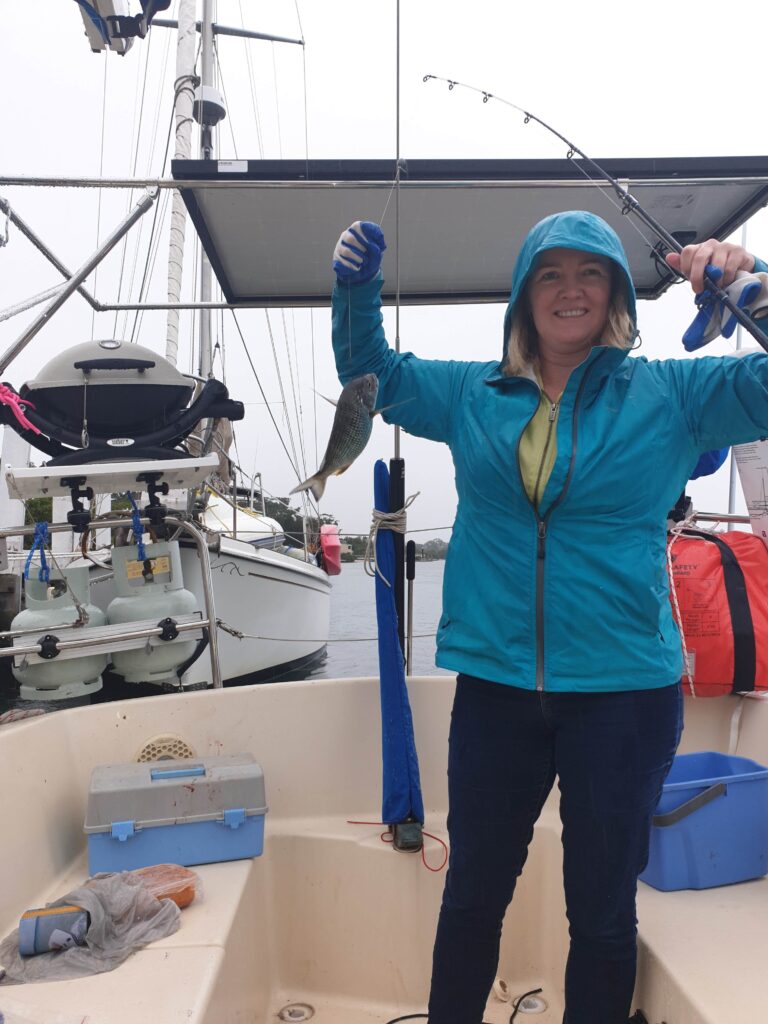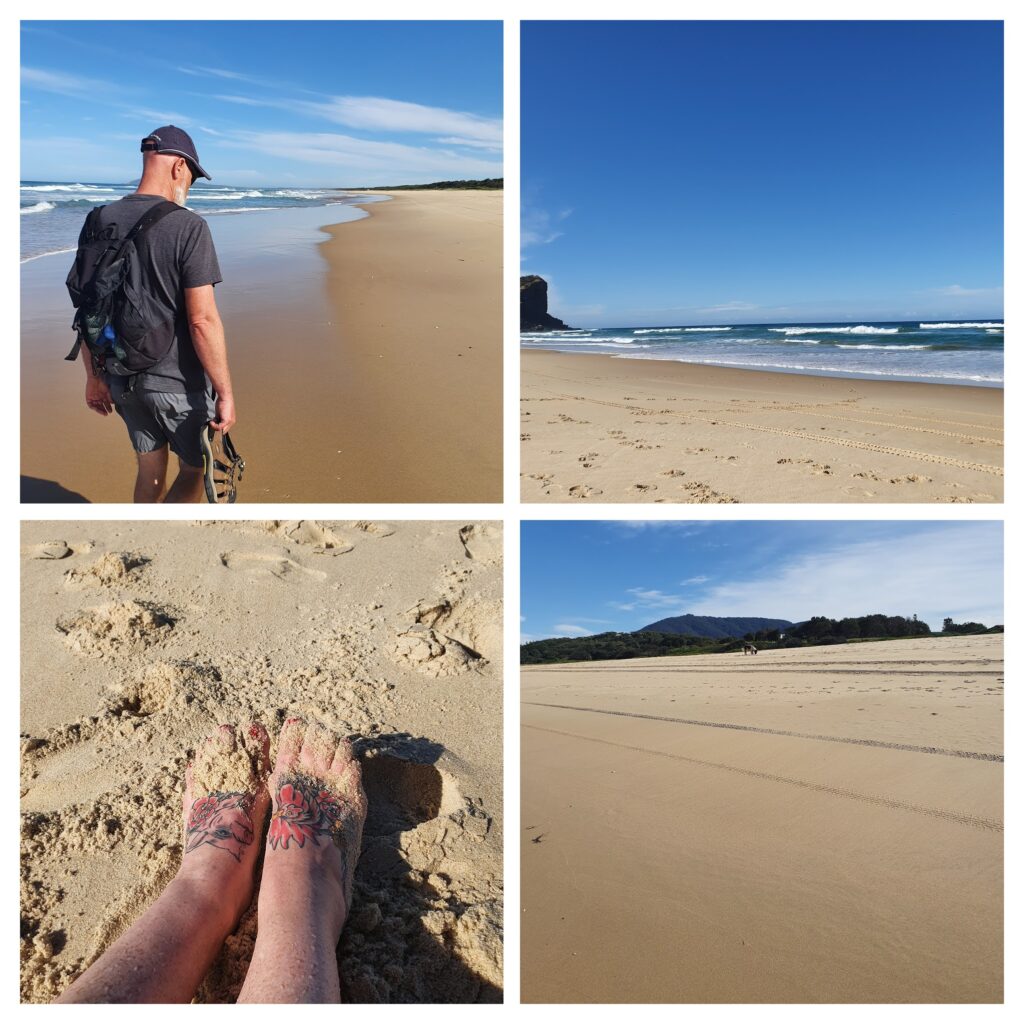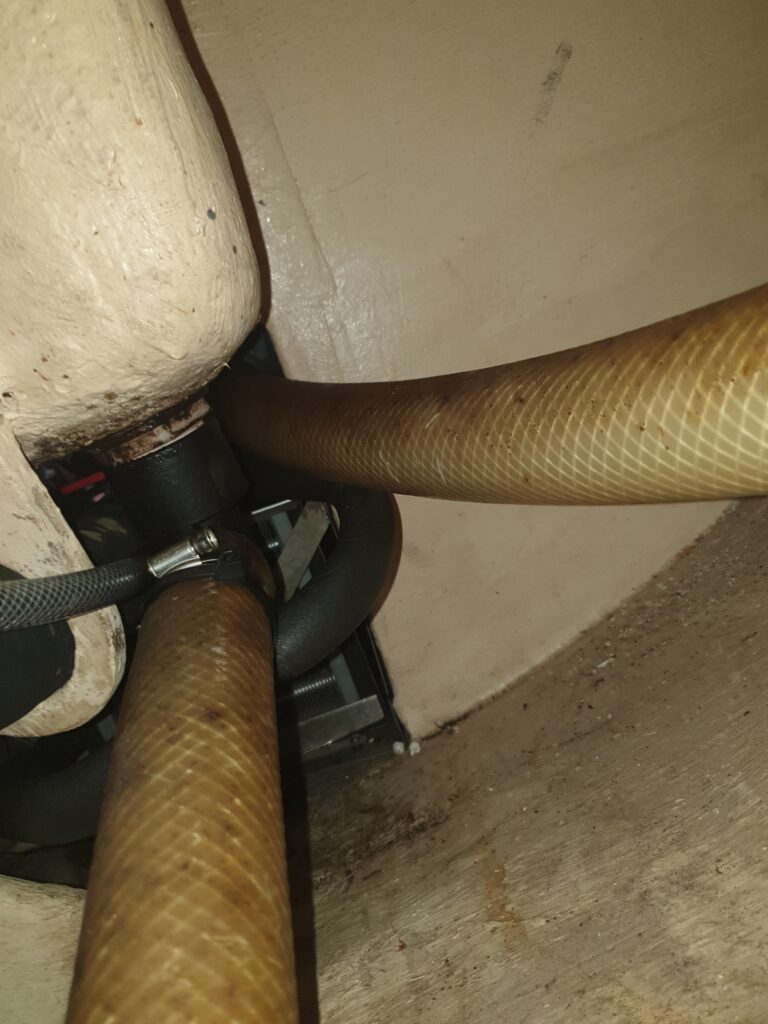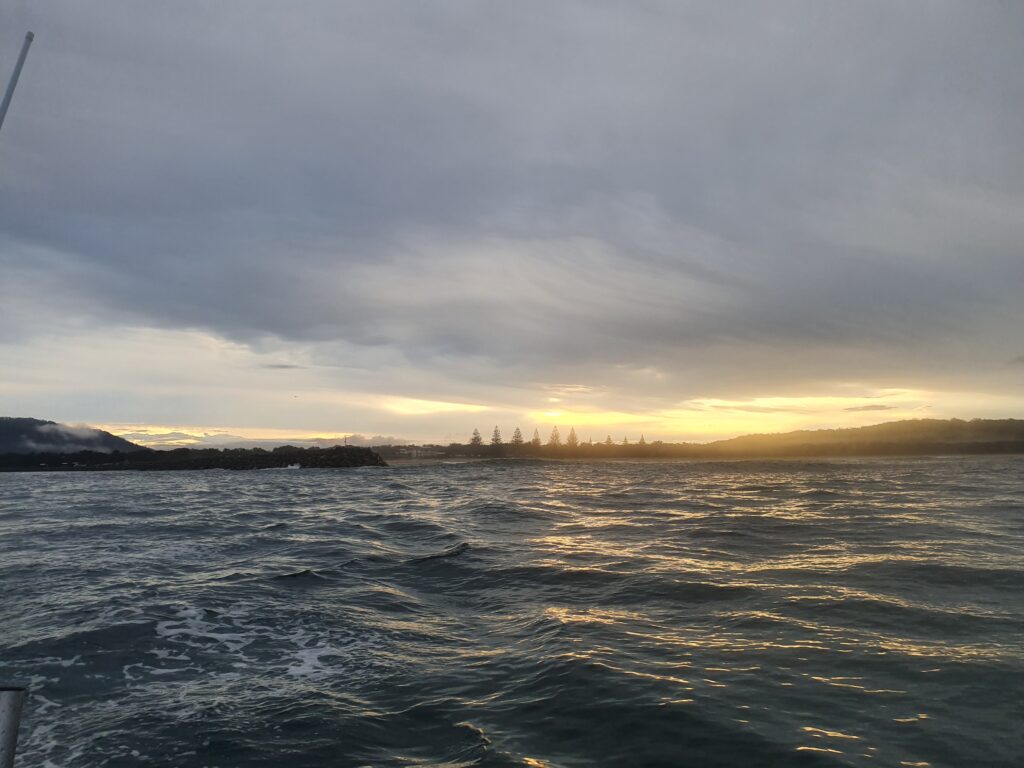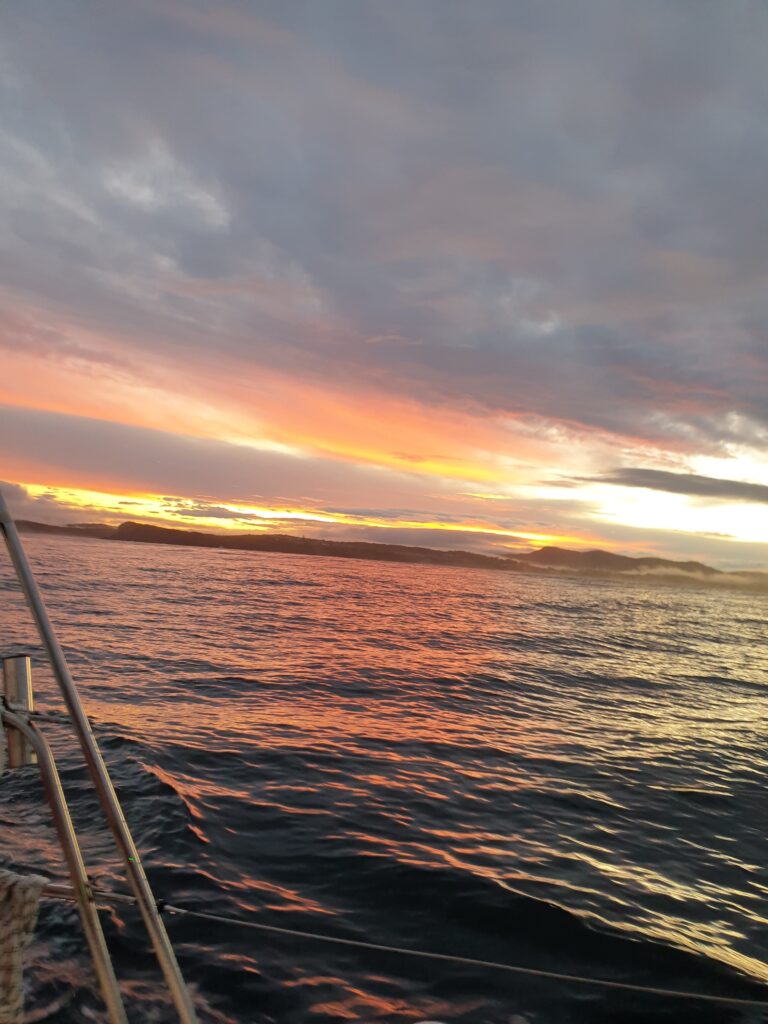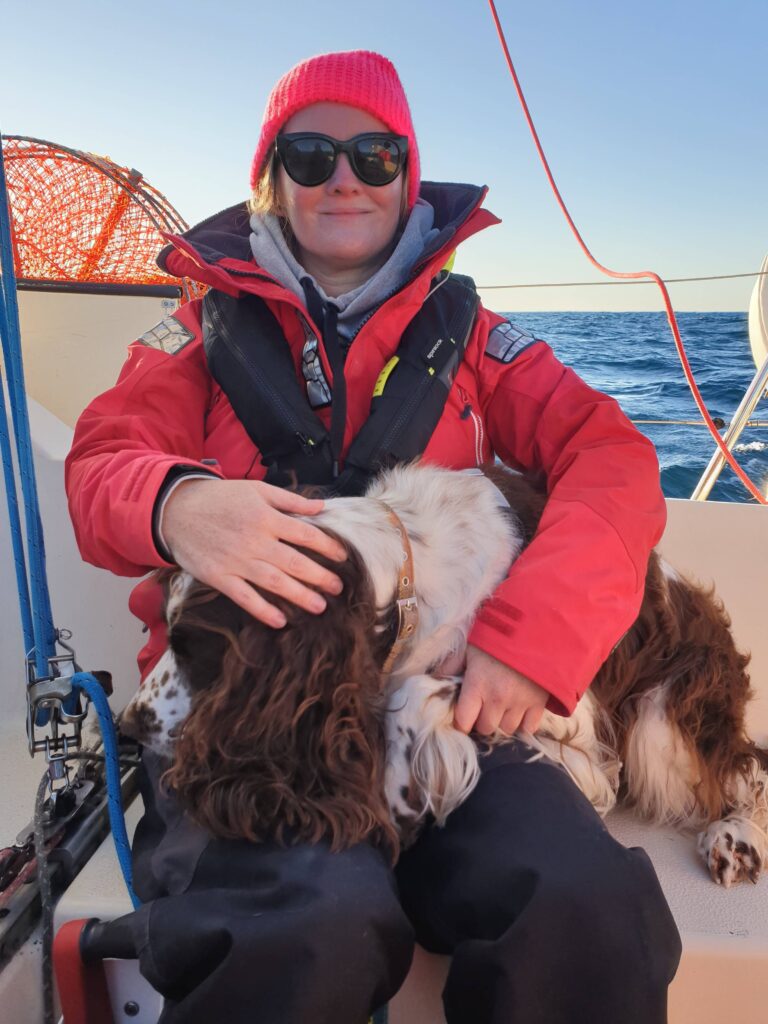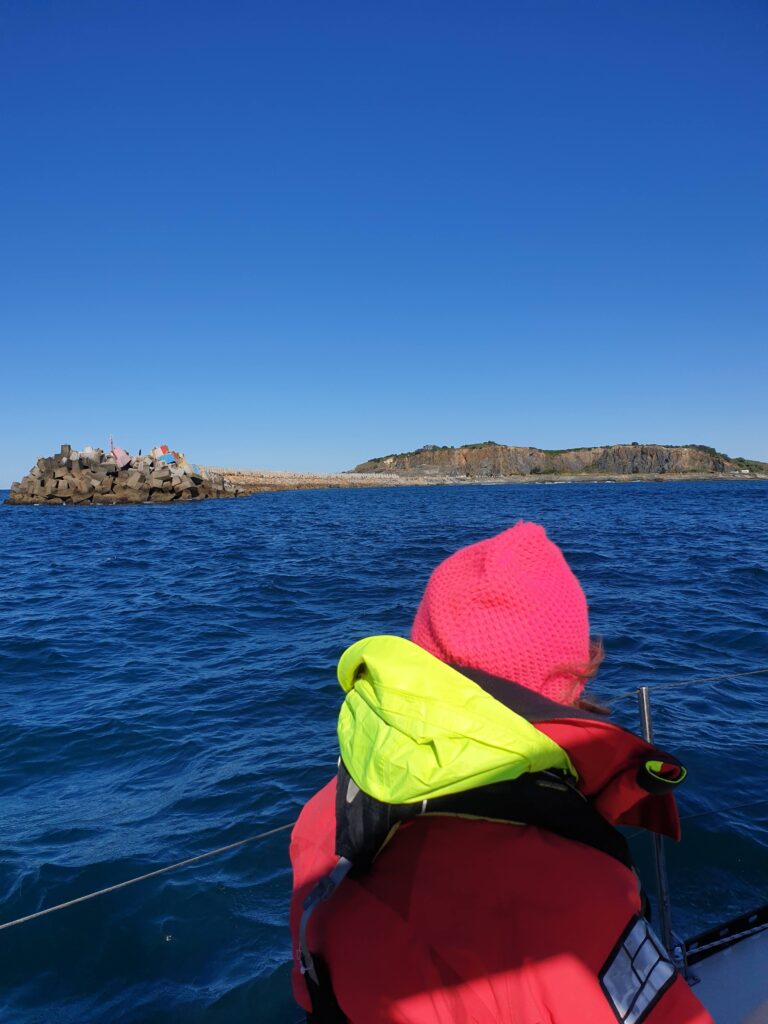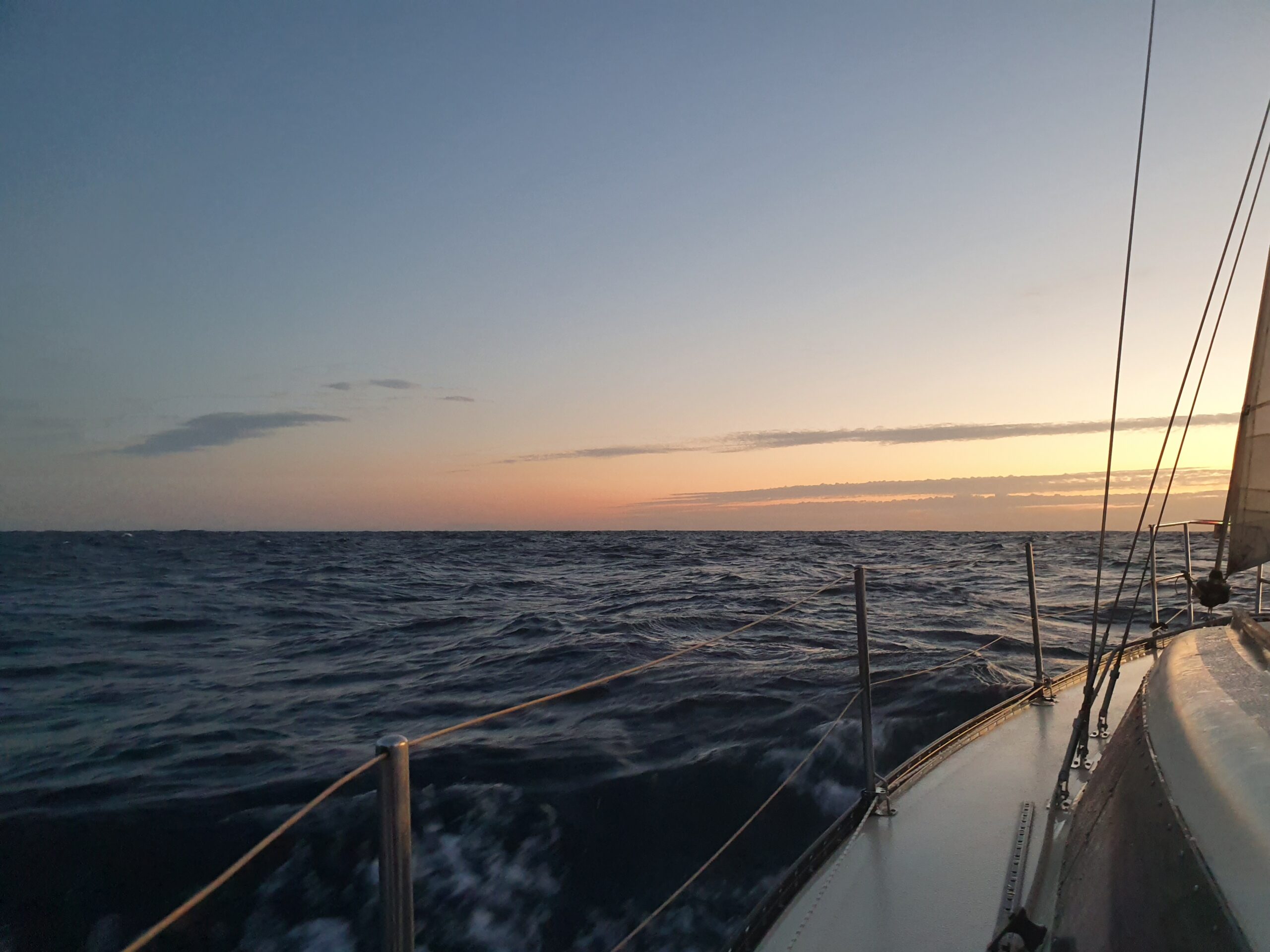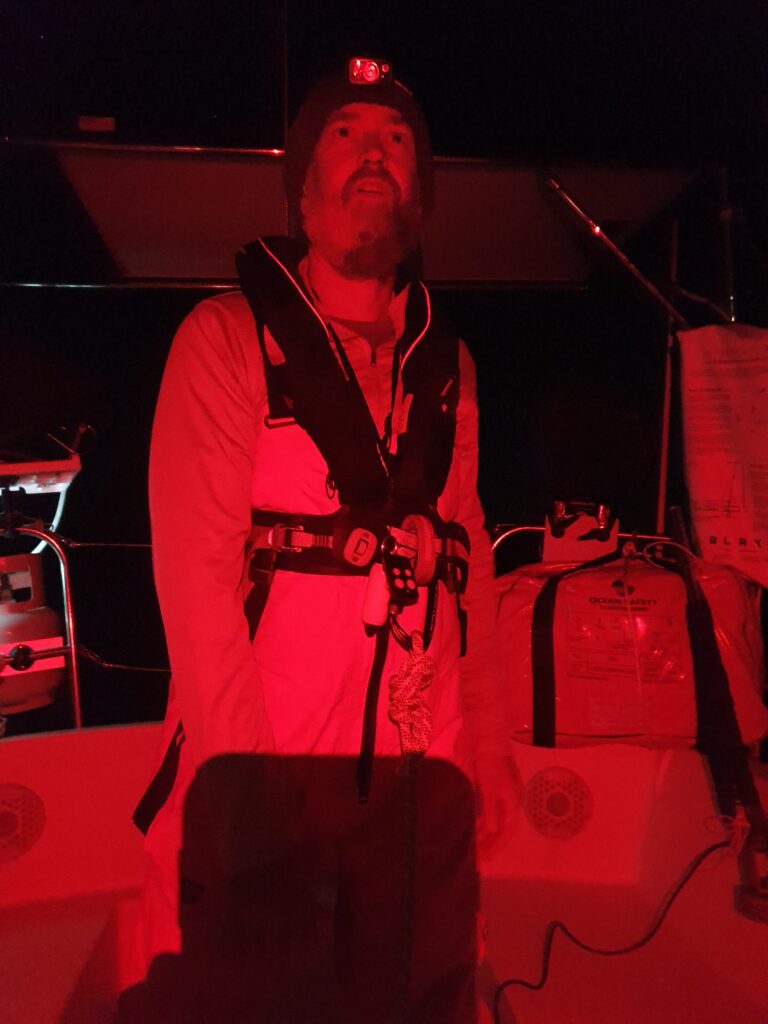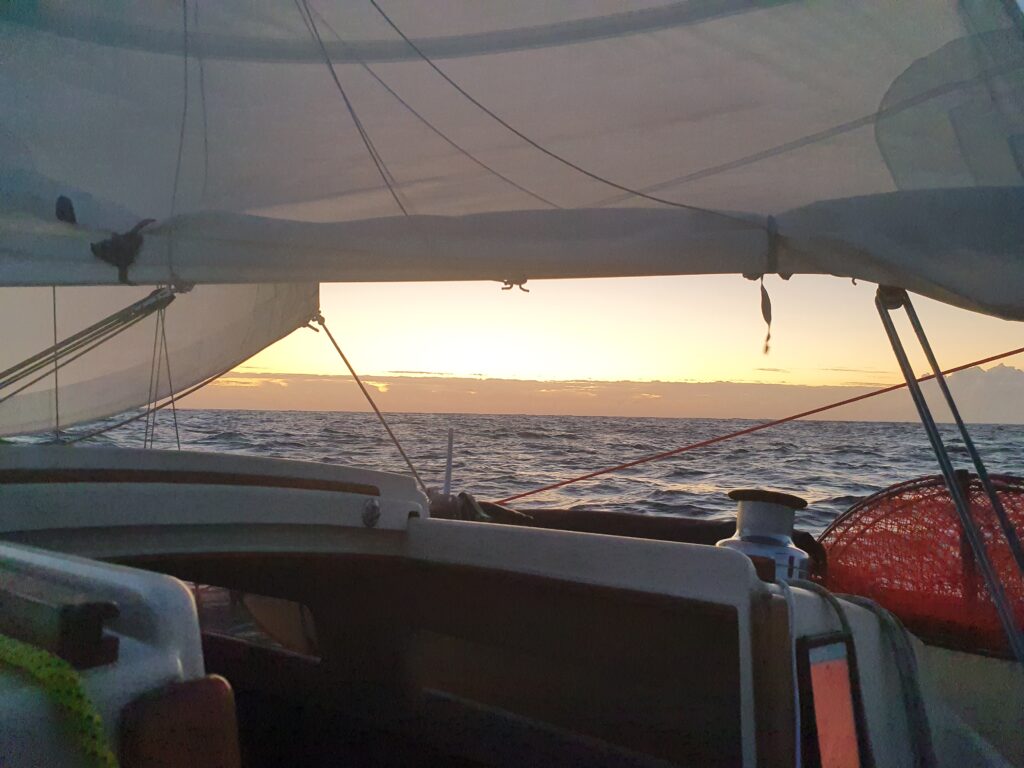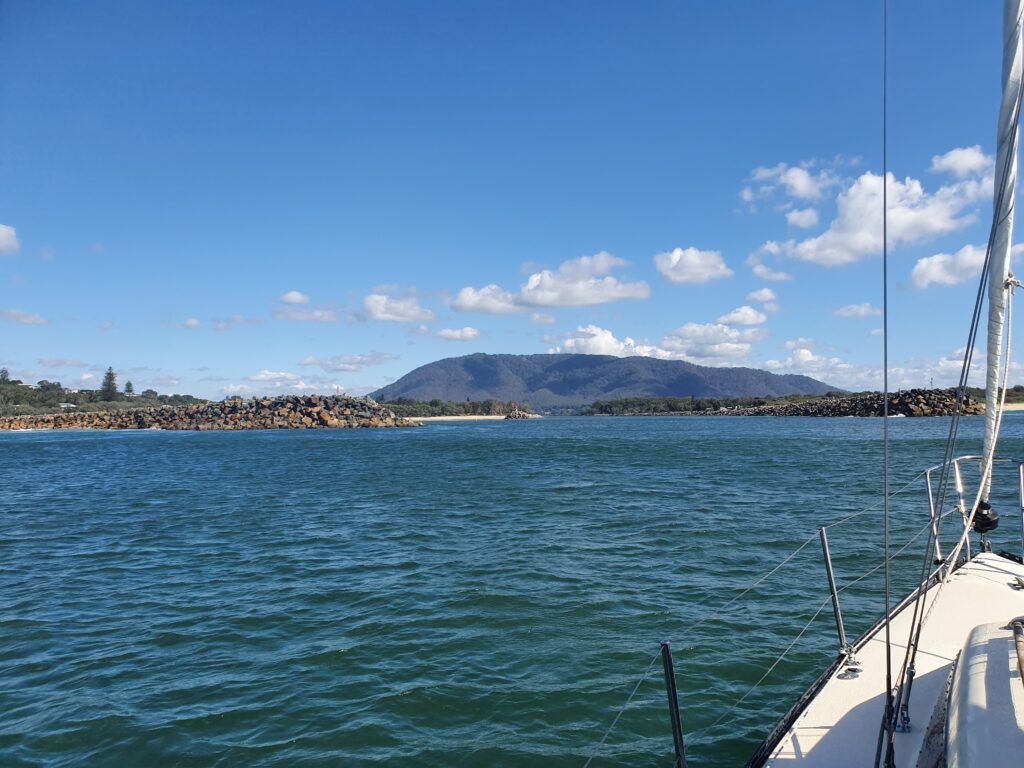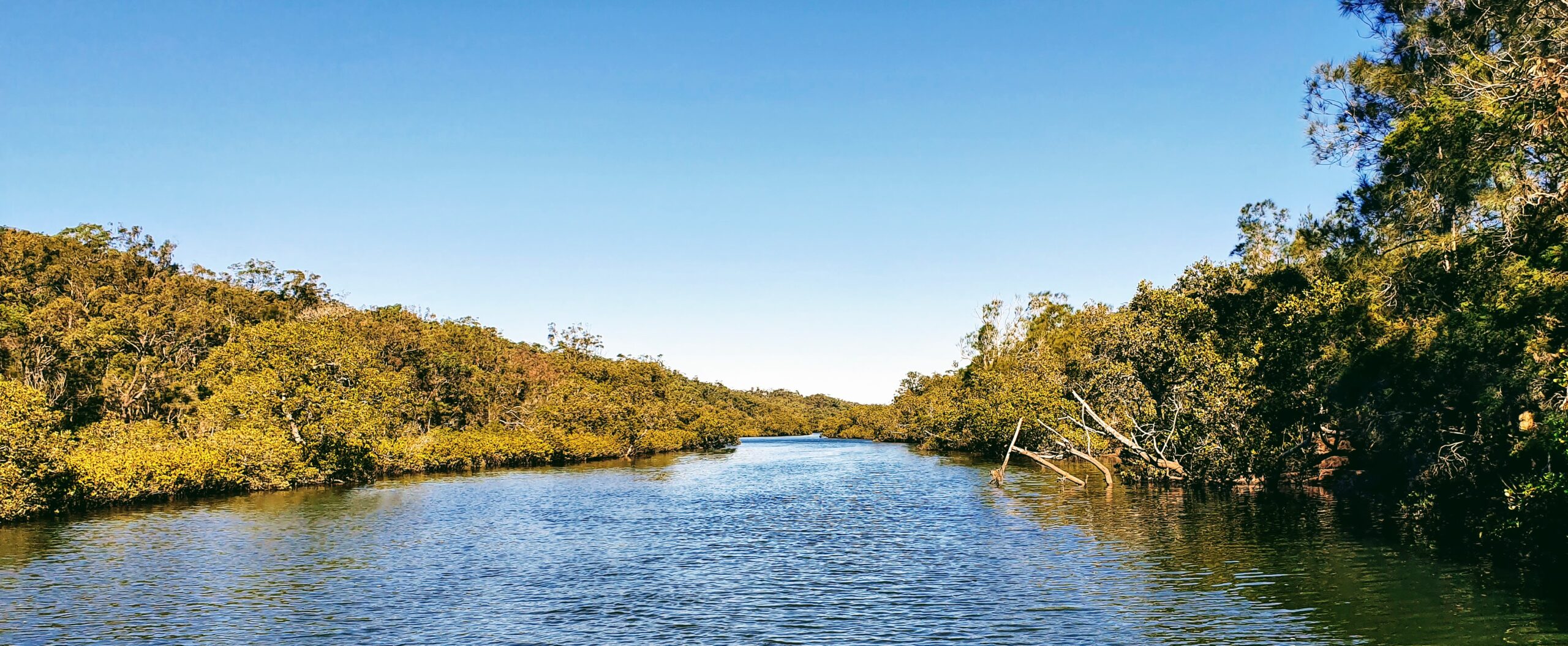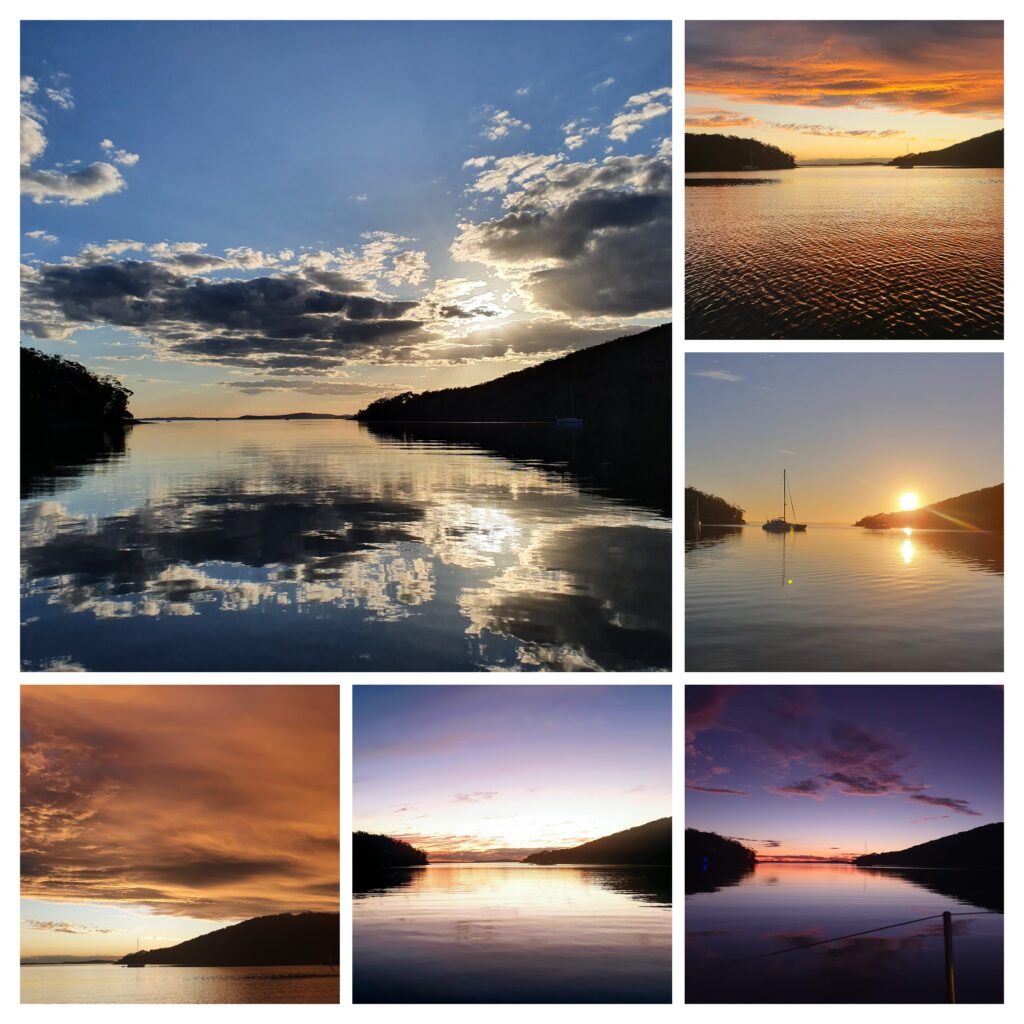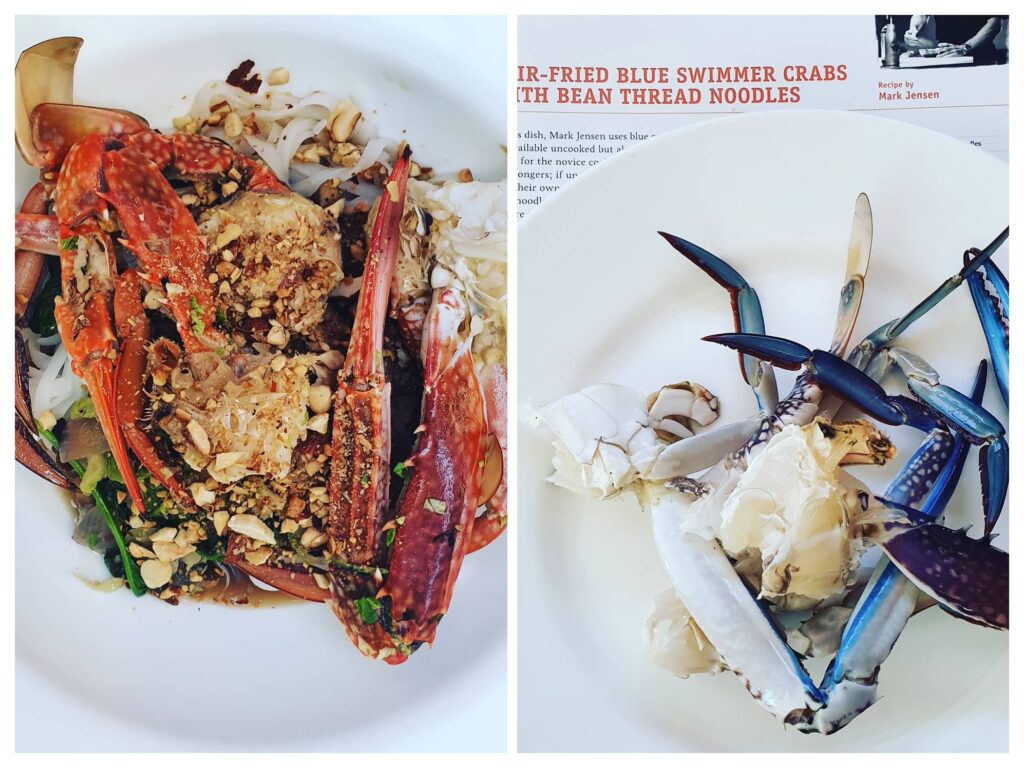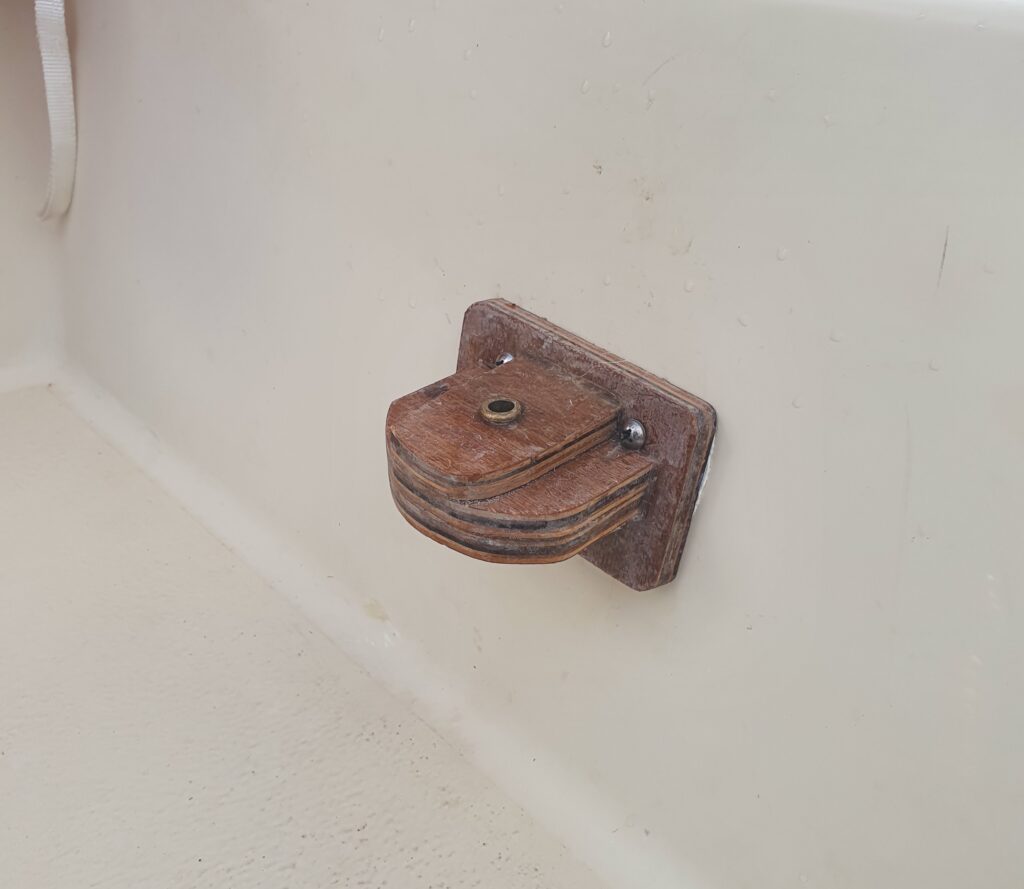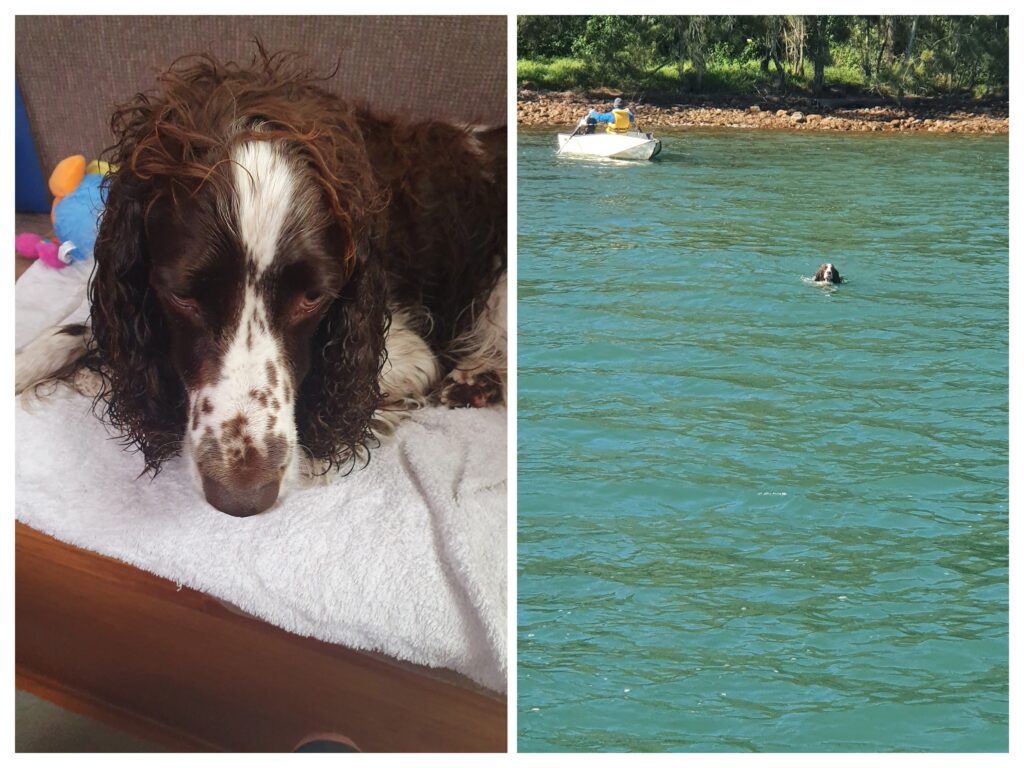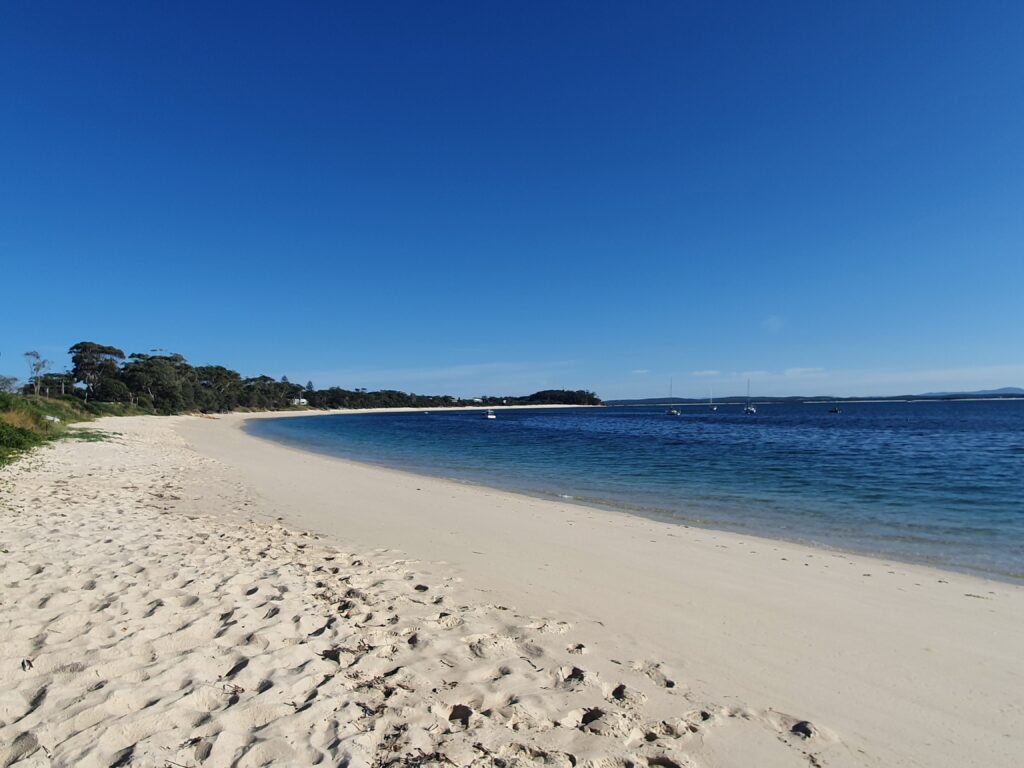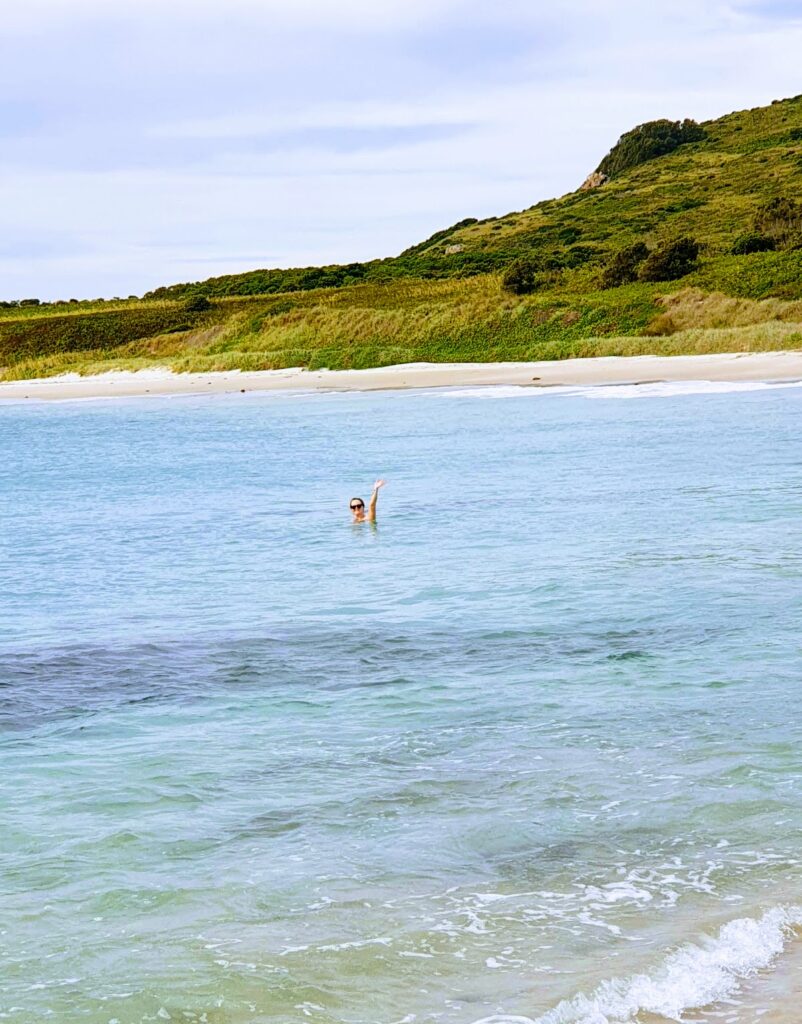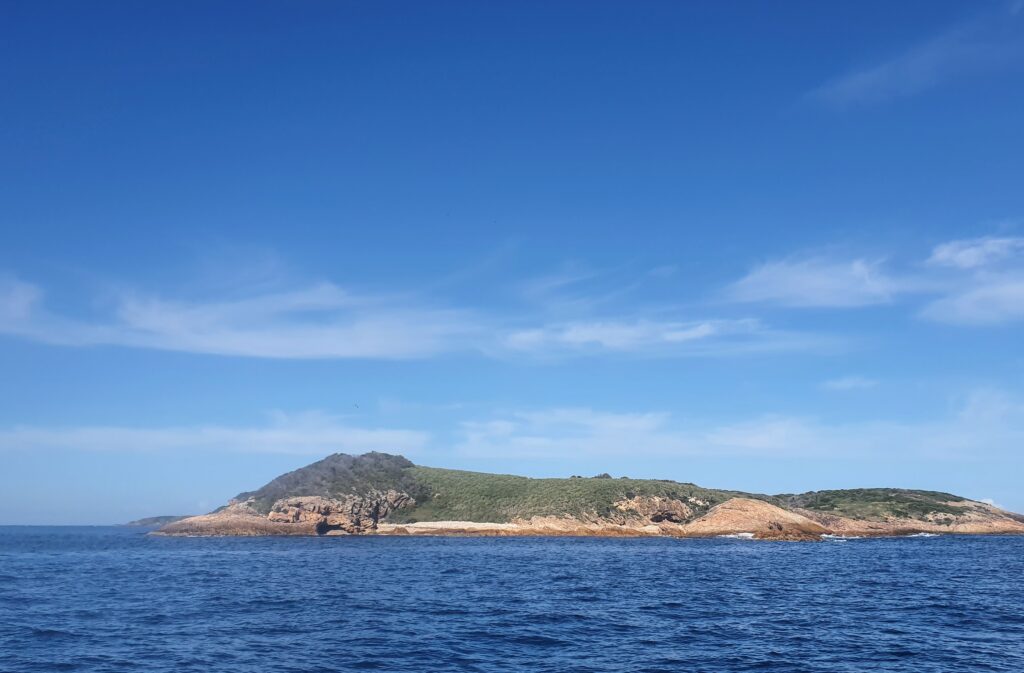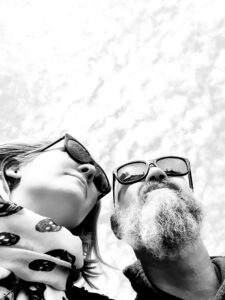By Adrian
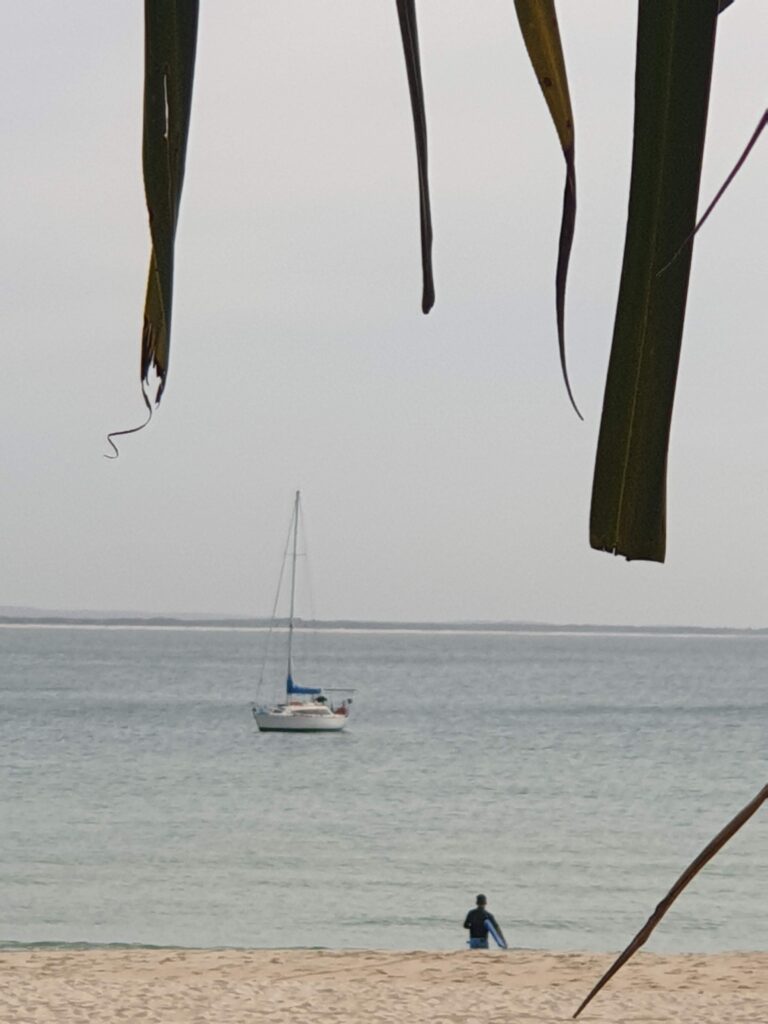
We enjoyed the celebrity of being the only boat in the bay at Noosa. Swimmers would say G’day as they passed on their morning exercise across the bay. Bernie enjoyed a run on the sand and we indulged in a coffee and ice cream. It was easy to explain “we are the people on the boat”.
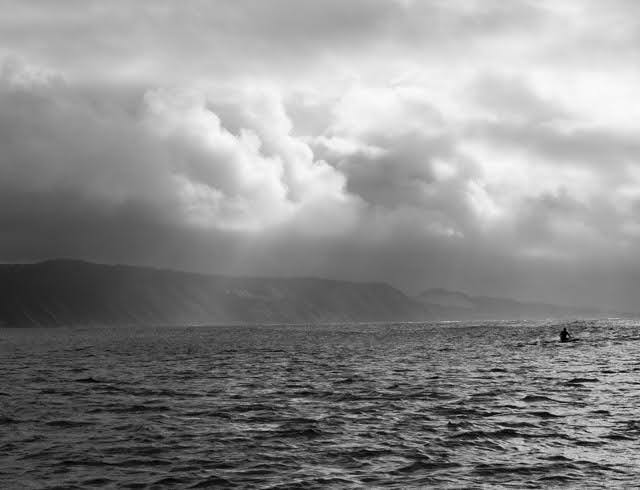
Noosa is open to the North and West and with unsettled weather coming it was time to head North. It was a learning day: 1.5m swell on a 6 second period that turns out to be closer to 2m with occasional breaking crests crashing on our hull are quite uncomfortable. Add some rain and it was a big relief to round Double Island Point after 10 hours of rolling and find a spot out of the swell for the night.
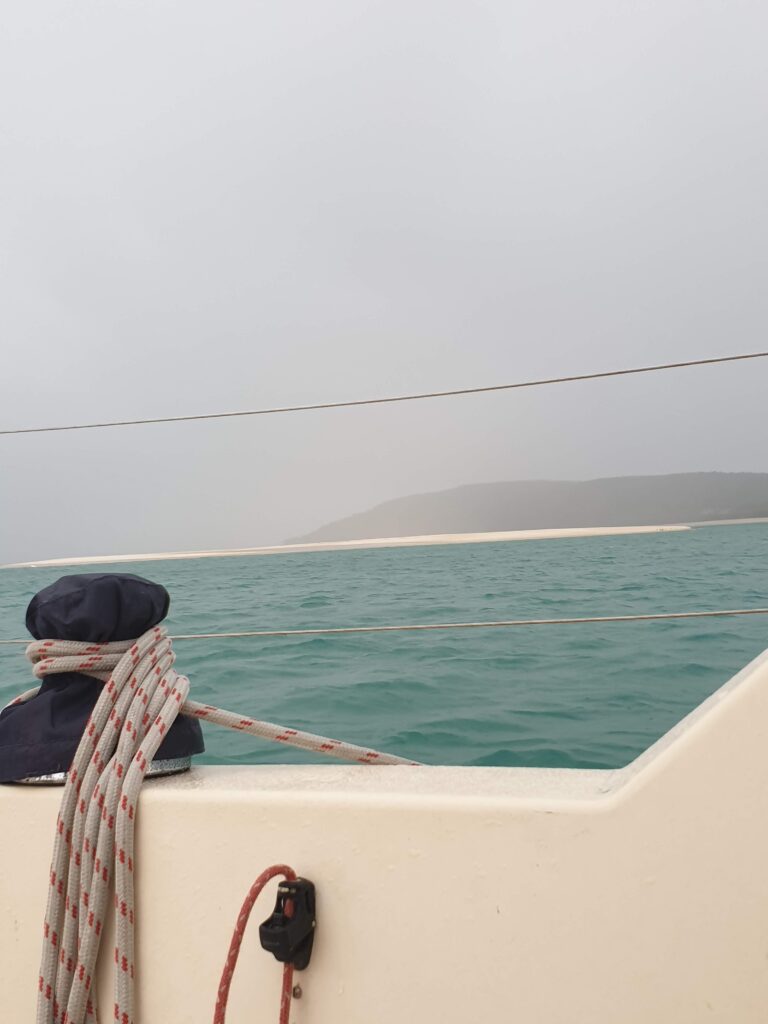
We considered heading across the infamous Wide Bay Bar the next day but a call to the coast guard reported 2m breaking waves on the bar. We are sure Addictive would handle these conditions but we would likely need a change of under garments so we decided to stay put. It was a gamble as unsettled weather might mean pleasant conditions or 30 knots onshore at Double Island Point in the days ahead.
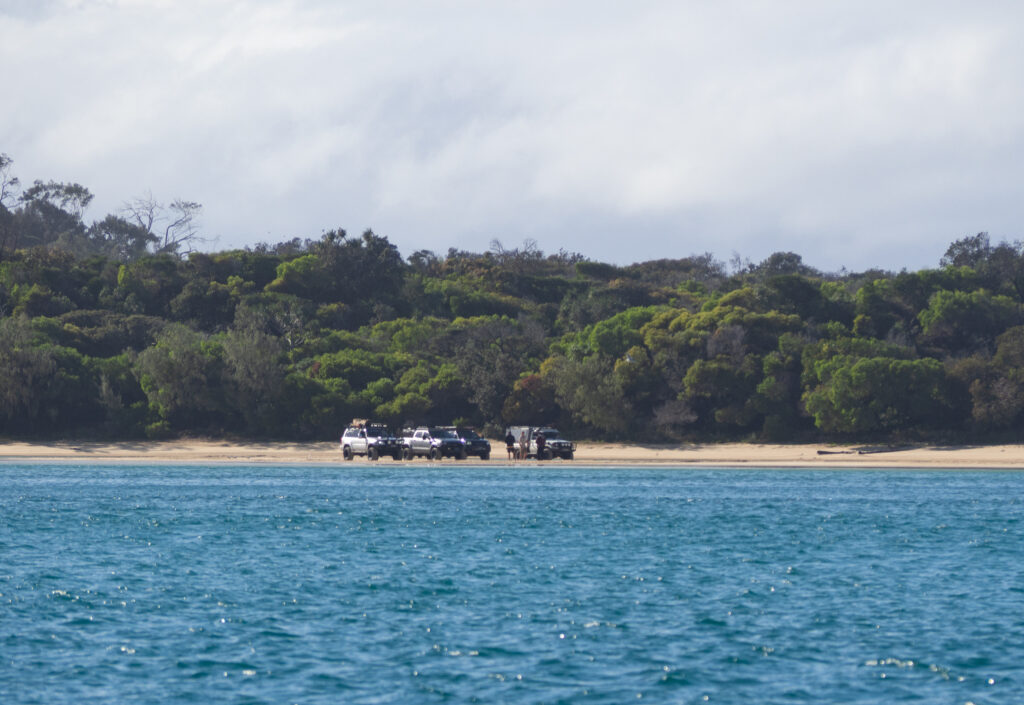
Double Island Point is a Mecca for 4WDs arriving for fishing, surfing, boating, or just sitting on the lounge with the eski on the back of the ute. There is a sheltered lagoon that we tried to enter, but some back-of-envelope calculations suggested Addictive would be aground when the tide went out. We settled for a spot mostly out of the swell at the lagoon entrance.
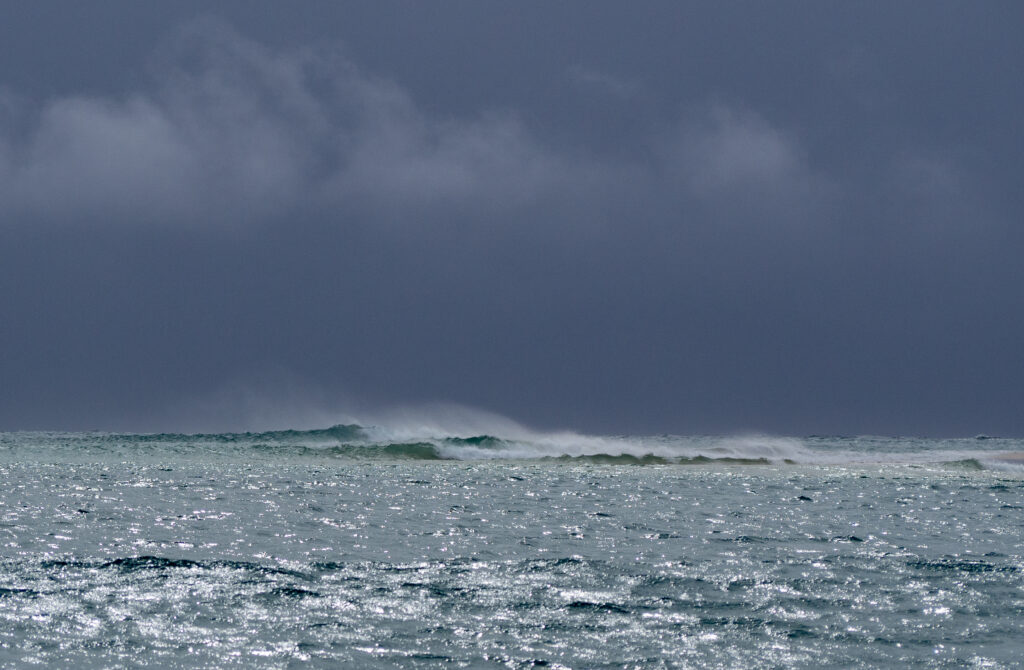
The next few days saw increased swells with waves across the bay big enough for foil borders to surf past us. We kept anchor watch at night and one evening a grinding sound alerted us to the anchor rode wrapping around the keel. Suddenly we were side on to 3 knots of tidal current putting massive pressure on the anchor and anchor rope dug into the keel. Add some rain and we had a challenging few hours in the dark cutting out the rope now securely embedded in the keel and re-anchoring on a very short rode. Another night of anchor watch ensued.
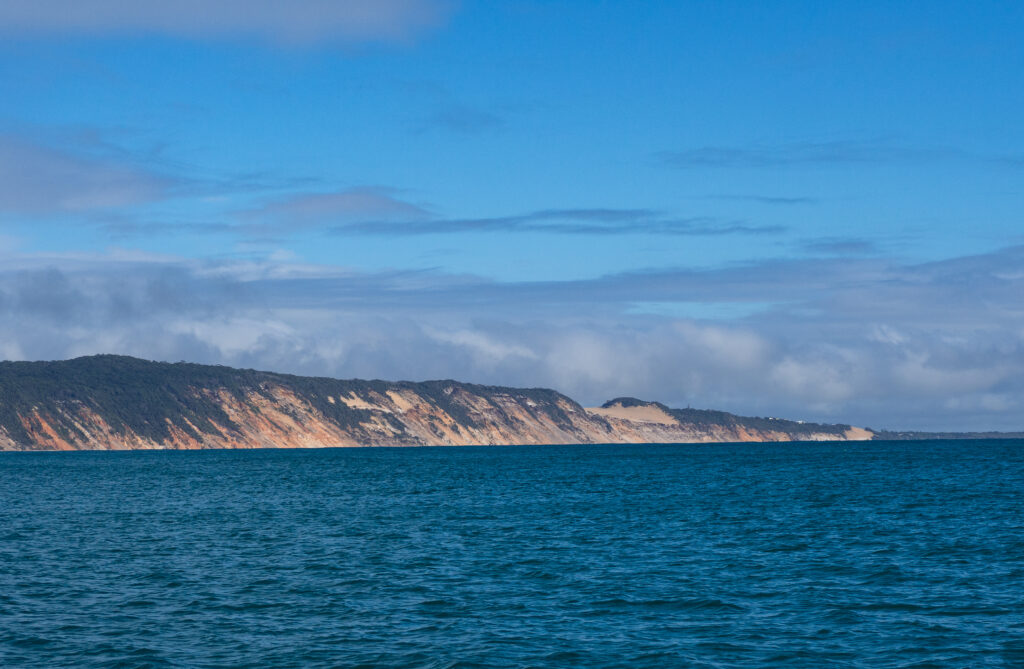
The next day at high tide we moved to deeper water. We knew it would be rolly but at least we could relax in an onshore wind being 1000m off the beach, and make an easy exit in the morning. Mother nature had one more curve ball to throw with a long line of electrical storms passing through. Fi quickly wrapped all the sensitive electrical devices in aluminium foil, and I suspect Bernie was next if our foil had not run out.
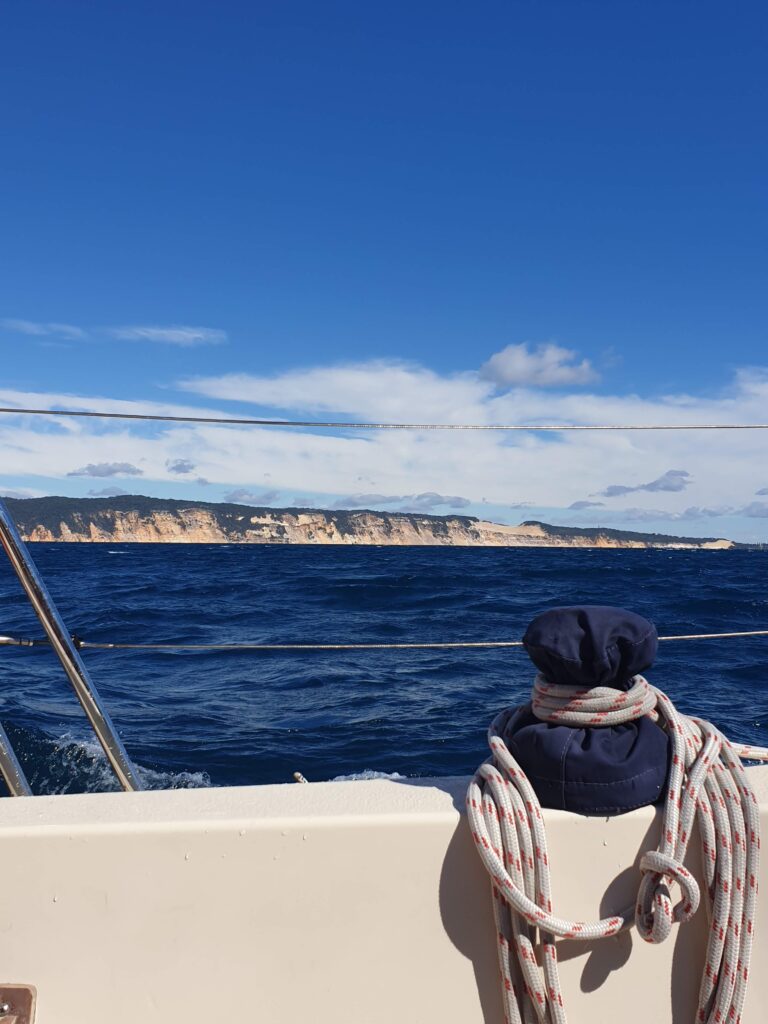
Next morning lower swells and a good coastguard report (‘you wont even notice the bar’) were all we needed to get the engine running, set the auto helm and aim for a high tide bar crossing. The bar was flat as forecast, although the 10-15 knot winds turned out to be 20+ so there was plenty of wind slop and spray to keep us cool.
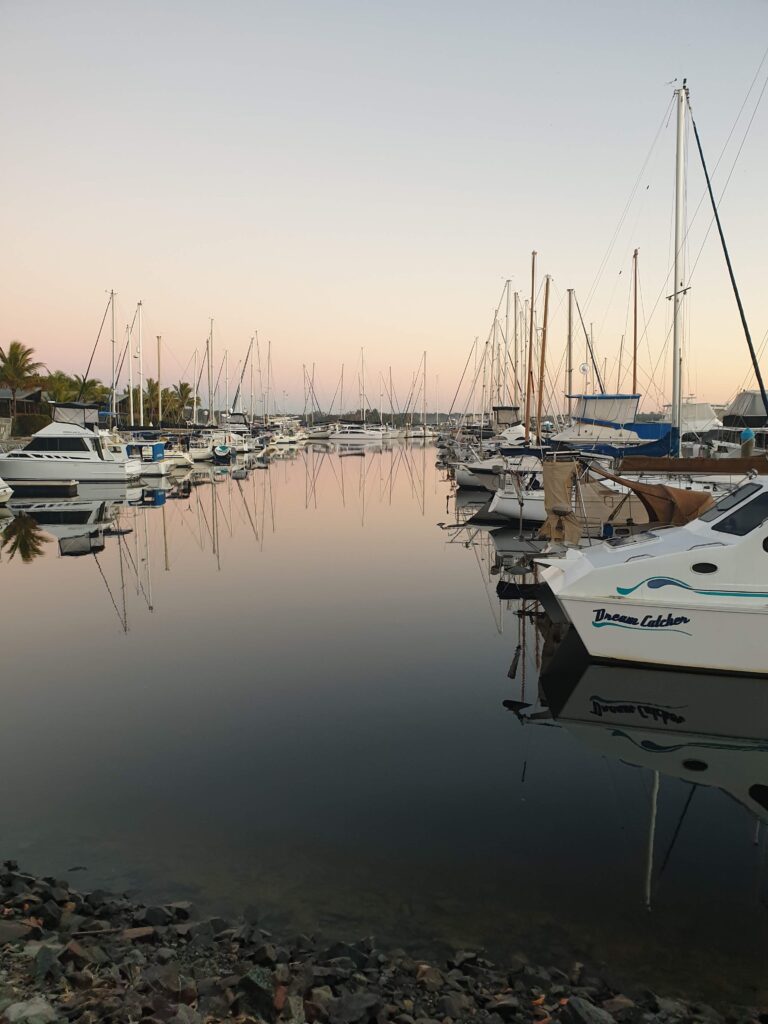
Tin Can Bay marina promised a haul out facility to fix the keel, and a much needed respite from rolly nights and anchor watches. They came out to help us dock due to the ‘strong winds’ but we weren’t going to argue and were relieved to step ashore again.
Unfortunately, Tin Can Bay Marina couldn’t help with our extra decorative rope wrapped around the keel, so from here we will head to Hervey Bay where we can haul poor Addictive out, remove the rope and patch up any damage (via a little stop in a cute anchorage in Fraser).
